Mark Twain is said to have once averred that the least that architecture could do was “improve the weather”. It’s a useful aphorism in any climate but has particular relevance to Hannibal, Missouri, along the Mississippi River, where Twain was raised (just ignore the fact that the attribution is apocryphal). In a place where the summer humidity builds to an afternoon crescendo of crackling thunderstorms, architecture has a responsibility to help and can improve people’s quality of life.
Enter the porch. In simple terms, it’s a raised platform with columns that support a canopy or roof. While it was originally just a primitive, hut-like structure, the porch today has achieved high levels of sophistication, especially in a domestic American context. Finely tuned to weather and climate, it provides shade and helps to cool the exterior of a building. It’s also a liminal space. Like a townhouse’s stoop, it has a social function beyond the privacy of a home’s interiors. It’s a vantage point, a threshold.

The porch is deeply rooted in US culture. The classic 1960 novel To Kill a Mockingbird takes place almost entirely on a veranda; in many ways, it’s a dialogue of sorts across a street between young Scout Finch and Boo Radley. In the early and mid-20th century, photojournalist Walker Evans captured numerous stoops and lives of quiet dignity in his photos of the Great Depression and New Deal America. Edward Hopper’s paintings have a porch-like quality too, while Bell Hooks’ poetry highlights porches as places of public appearance, especially for women. But the importance of this space isn’t as widely acknowledged as it should be. The US has often been viewed as a nation of houses but if you look at these buildings, from schoolhouse to house of worship, you see that their porches make them stand out.
The more I have investigated this idea, the more I have discovered that the porch – a staple of the American South – is thriving across the country. Its shape and scale are evolving. At the height of the coronavirus pandemic, a local food co-operative in Fayetteville, Arkansas, relocated to a downtown building, renovating the interiors but also constructing a broad, high veranda. It’s a simple feature with columns supporting a robust roof canopy, furniture for gathering and space to enjoy a meal or watch children playing. It’s not just the prominence that’s important; it’s also the shade, the captured breezes, the lowered temperature and the view outwards to the city’s main thoroughfare and surrounding landscape.
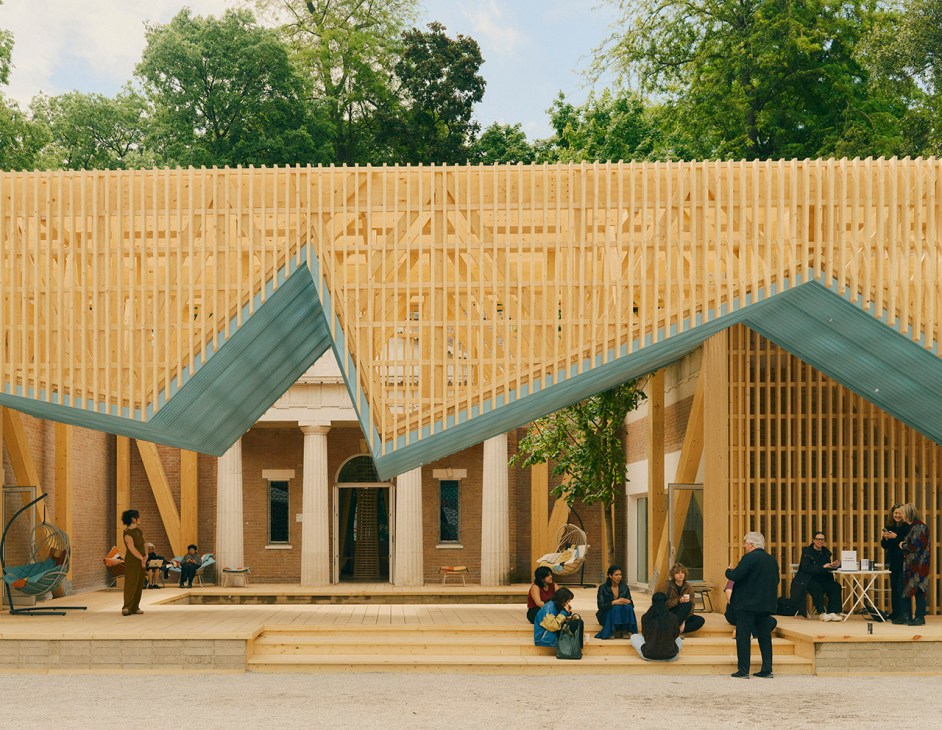
Charlie Hailey, author of The Porch: Meditations at the Edge of Nature, writes that “to think like a porch is to witness and to change our point of view”. This is what the US Pavilion at the 2025 Venice Biennale does with Porch: An Architecture of Generosity. In previous years, the Pavilion hasn’t been as accessible; putting a stoop in front of the building seemed like the obvious answer. As the name suggests, it’s a place for all to enjoy – to find respite and engage with others. Twain – or whoever made the comment – would have approved. It might not change the world but at least it improves the weather.
MacKeith is the lead commissioner for the US Pavilion at the Venice Biennale. He is also the dean and professor of architecture at the Fay Jones School of Architecture and Design, University of Arkansas.
This piece was published in ‘The Monocle Companion: Fifty Ideas on Architecture, Design and Building Better’, which is out now. The fifth title in our Companion series of paperbacks, it’s packed with fresh ideas on design, creativity and the built environment, with a focus on the 2025 Venice Architecture Biennale, which runs until 23 November.
“Everything is designed,” Norman Foster tells me, sitting in a Venetian Palazzo that’s flooded with natural light. “This means that nothing happens by chance. A building or infrastructure is either designed badly and without too much thought, or it’s designed well.” I’m speaking to the Pritzker Prize winning architect at the Venice Biennale and we’re discussing the link between the built environment and quality of life.
It’s a topic that Monocle has always dedicated its July/August issue to and 2025 is no different. Our approach to the subject differs slightly from other media outlets and research institutions, which tend to focus on hard metrics: average income or crime rates. These are important but we’re also interested in how architecture and infrastructure change how we feel about ourselves and our cities. We seek to answer questions such as: does the local library lift our spirits? Or, is public housing not only available but of a quality that makes people proud to live in it? As Foster says, “We know that we can improve the quality of all our lives through design. We can do this by designing for our pleasure and enjoyment.”
Case in point is the project that Foster is presenting at the biennale in partnership with German automaker Porsche: a floating bridge and pontoon, with a shimmering shell enclosing a dock for water bikes and motorboats. Both the kinetic nature of the structure and the novel form of transport are intended to bring a sense of play to the lagoon city’s infrastructure.
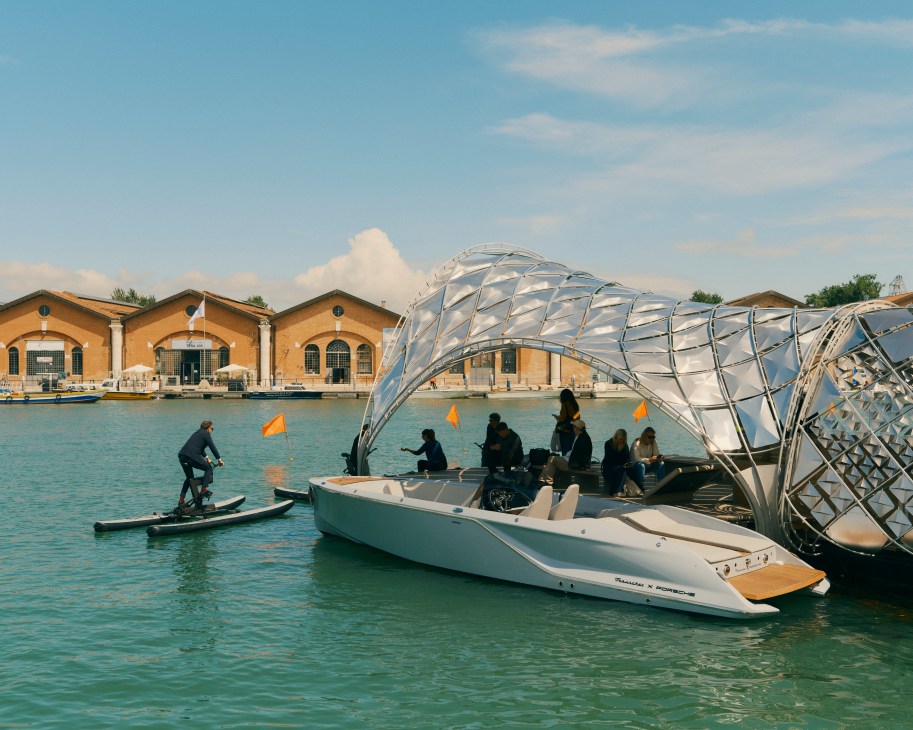
It reflects an ethos that can be found across Foster’s portfolio which, despite being exceptionally functional, expresses much novelty. There is London’s 30 St Mary Axe, known as The Gherkin, which challenged the convention of office buildings; and his Reichstag renovation in Berlin, with a glass roof on which the public can walk – a masterstroke of democratic symbolism. All are much celebrated and a reminder that quality of life is about more than economic policy and statistical indicators. It’s also about looking at how we can bring moments of joy and pleasure into our lives.
Norman Foster is one of the world’s most celebrated architects. He established his namesake practice, Foster + Partners, in 1967, pioneering high-tech architecture through iconic structures such as Berlin’s Reichstag dome and London’s Gherkin. The Pritzker Prize laureate has redefined skylines globally over the course of five transformative decades of practice. Monocle sits down with Foster in Venice to discuss what the world should be thinking about now.
We’re meeting you in Venice. Why is an event like the Biennale important?
I remember being at a gathering in Aspen, Colorado, and one of the participants was Paul MacCready, who invented a device that tells pilots the best speed to fly a glider depending on conditions. I complimented him on the achievement of his man-powered flight and he wagged his finger and said, ‘What we should be talking about are the people who set the challenge of glider flying, which we have responded to.’ Venice is setting the challenge.
And what is that challenge in Venice?
That nothing happens by accident or chance – everything around us is designed. Things are either designed well or badly. It can be done casually and without too much thought – but it’s still designed. Good design is not about how much you spend, it’s about how wisely you spend it. It all comes down to attitude. It’s important because we know that we can improve the quality of all lives through good design.
Why is quality of life an important consideration for you?
We should be talking about the quality of urban life. Cities are the future and we have to improve the quality of life in them. This is also about our pleasure and enjoyment. It’s also about beauty. All of this relates to everything from architecture and infrastructure to energy. We need to ask if we are going to get a kick out of looking at a countryside completely covered by wind turbines? Are we going to get a kick out of solar panels that have destroyed a meadow?
What are some good infrastructure and energy solutions that ensure quality of life too?
We should think about nuclear. If we come down to data and we take emotion out of it the facts are clear. Depending on the estimate, between seven and 10 million people die every year through invisible, noxious fossil-fuel fumes. A lot of those are kids burning fossil fuel for heating and cooking. As an alternative, you can take a compact nuclear battery and deliver energy that can power an entire Manhattan city block. In doing so, you take out all the dangers of centralising energy. Such an option is still by a huge margin the safest, cleanest, most compact energy solution – and you have total control of the waste from cradle to grave.
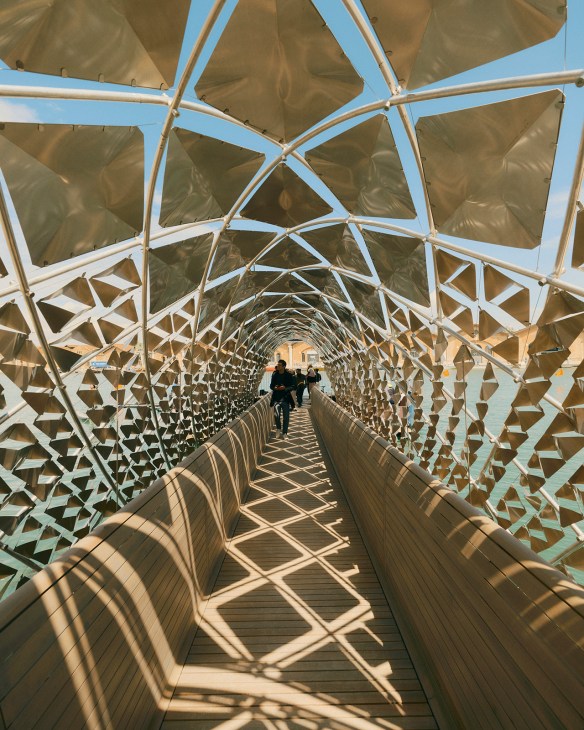
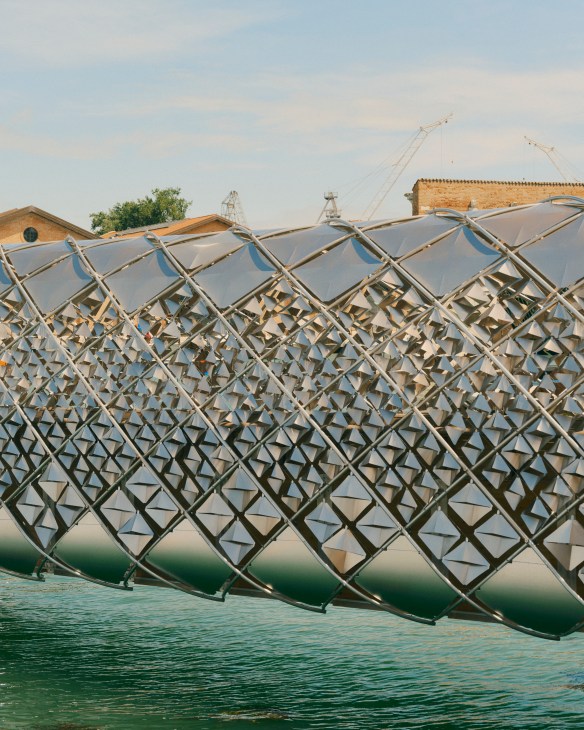
You’re in Venice showing a project created in partnership between the Norman Foster Foundation and Porsche. Why was it important for you to establish a foundation?
It’s about bringing the best of academia together with an extraordinary network of world experts on every aspect of urbanity and combining that with hands-on experience in a city that’s now developing into specialities. One example is city science – the use of digital tools to explore the effects of design decisions such as planting more trees and the effects that might have on air quality and both vehicular and pedestrian traffic. We want to pass on knowledge from professionals to those who serve at a political level and at an expert level, while preserving archives for future researchers.
The project with Porsche is a shimmering 37-metre-long bridge on the edge of the Arsenale in Venice. It extends to a floating pontoon on a lagoon that is currently being used as a mooring point for water bikes. What’s the ambition behind this?
We want to show that exploring new forms of mobility can be fun and enjoyable. If you go down there and you get on one of those water bikes and start to pedal across the lagoon, I bet that you’ll find yourself smiling. It’s about asking questions and looking at alternatives. What if this was an alternative mode of transport to a boat in Venice?
What are some of those alternatives for this project?
We can ask lots of questions. What if you can go to the edge of the lagoon and an app calls one for you on demand, and then when you get to your destination there’s a land-based version to take you elsewhere? What if there’s a machine that’s between the conventional automobile and a bike, a machine which can go on a motorway as well as in a walkable neighbourhood? These projects should stimulate thoughts about the future. The future is now. Today is the first day of the future.
Will things be different this time? That’s a question that Argentines have had to ask themselves with disconcerting regularity. Once among the world’s wealthiest nations, the South American country is now better known for its periodic economic crises, of which there have been many over the past 50 years. When the storm clouds clear and the economy starts to pick up steam, its citizens are often left pondering that searching question.
Argentines have grown so accustomed to uncertainty that many store large sums of cash (mostly US dollars) under their mattresses – rainy-day funds for when things take a turn for the worse. Private safety-deposit boxes and jars under the kitchen sink have also proved popular alternatives to banks. Since the election of libertarian Javier Milei as president in 2023, however, the country has become increasingly optimistic about the economy. The unconventional mop-haired leader, who reportedly seeks economic and political counsel from his dogs, has enacted sweeping reforms across everything from fiscal policy and deregulation to privatisation and labour laws. Though it’s still early days, his policies appear to be steering Argentina towards a more stable path. In May, the monthly inflation rate fell below 2 per cent for the first time in five years.
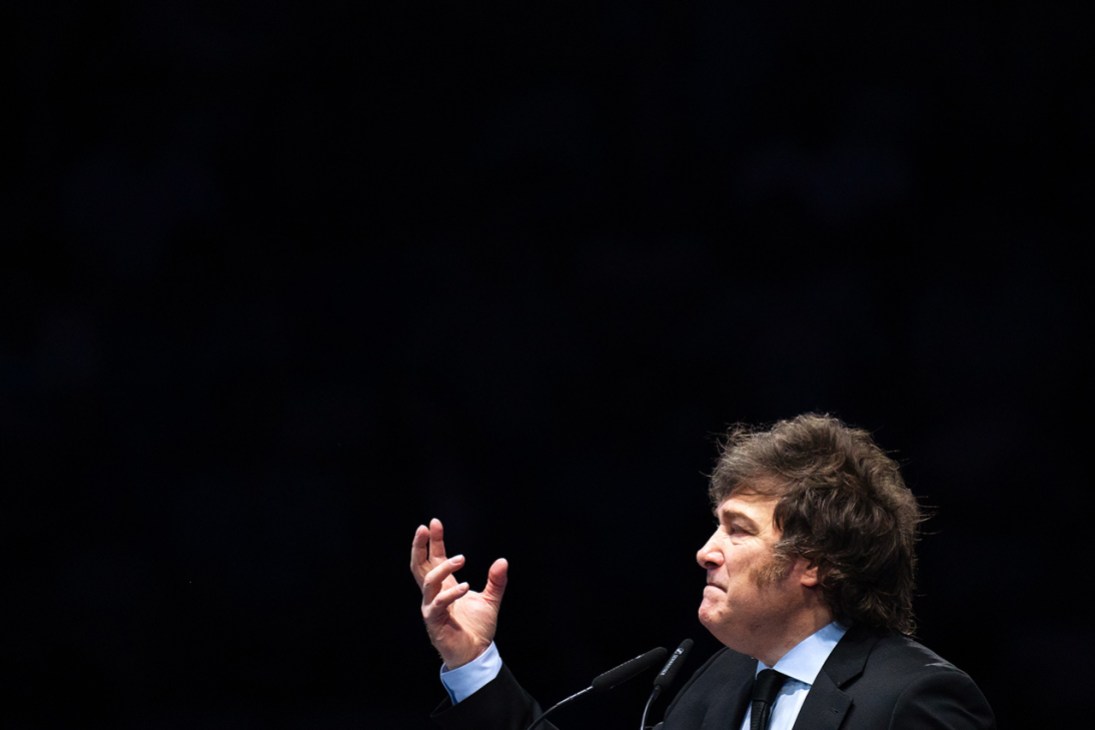
Now, Milei is putting this cautious optimism to the test. Last month the government announced that it would scrap elaborate rules aimed at preventing tax evasion and monitoring personal wealth. The goal? To coax an estimated $270bn (€230bn) of so-called “mattress dollars” back into the economy. Under the president’s scheme – officially dubbed the “Historical Reparation Plan for Argentines’ Savings” – citizens will be able to deposit dollars into bank accounts without fear of penalties or investigations into the source of their wealth. The government has tried to frame the move as part of a broader cultural shift in how it engages with the people. Or, as one lawmaker put it, “There will be no more persecution [of Argentines] as if they were Al Capone.”
The goal of the policy is to remonetise the economy and boost Argentina’s foreign reserves, which remain perilously low. Officials hope that the increased dollar circulation will stabilise the peso and boost fiscal activity. Whether or not the campaign succeeds, however, depends on whether Argentines can trust a banking system that has burned them many times before. The “mattress dollars” legislation is currently winding its way through Congress. Next up are legislative elections scheduled for October. If voters signal their satisfaction with Milei and hand his right-wing coalition a thumping victory, the stage will be set for deeper reforms. Crucially, the average Argentine might sleep better at night knowing that their cash is safely stowed away in a bank and not hidden under their bed.
Harris is a Monocle contributor based in São Paulo. For more opinion, analysis and insight, subscribe to Monocle today.
Singapore’s undeserved reputation for being dull is, mercifully, mostly behind it. Anyone who has visited recently will have seen those long-promised green shoots of growth and sophistication bearing lush fruit in everything from hospitality and design to entrepreneurship. Plus, doesn’t being safe, steady and predictable seem rather appealing today, given the fractious global backdrop?
But there’s a thorny issue that still threatens the country’s success. Having finally achieved the cultural and creative cachet that they craved, Singapore’s budding restaurant, retail and hotel scenes had a slower-than-hoped-for Q1. Rent rises from private developers and landlords are now fast outstripping what smaller businesses say that they can comfortably afford.
When good businesses on tight margins go under in a squeeze, their neighbourhoods pay a steep price. Once-thriving Tiong Bahru has lost some of its former lustre and you only need to look as far as the sad closure of the Thambi Magazine Store in Holland Village to see how one lively independent operator – of more than 80 years’ standing – can unite and delight an area, then leave it wanting when it’s gone.

The issue of peaking rental prices was unavoidable among the people I spoke to on a recent reporting trip with our Asia editor, James Chambers. One Singapore-based owner of a Japanese clothing brand told us about staging a trunk show in Seoul to test the market as costs soared at home. Two others in the hospitality trade told us about upcoming trips to Jakarta to scope out spaces where their money could go further (both near Plaza Indonesia, if you’re looking yourself).
Luckily, some solutions are close at hand. Our trip to New Bahru – a handsome school-turned-shopping precinct – is a lesson in what decent, walkable, human-scale design that brings local brands together can do for footfall (plenty). Owned by The Lo & Behold Group, the space’s 40 or so tenants include a great bookshop, a spa, restaurants, multi-brands and places to drink that offer daylong allure. It’s a blueprint for designing a destination from scratch and keeping the creatives close. A much-anticipated phase two opens next year.
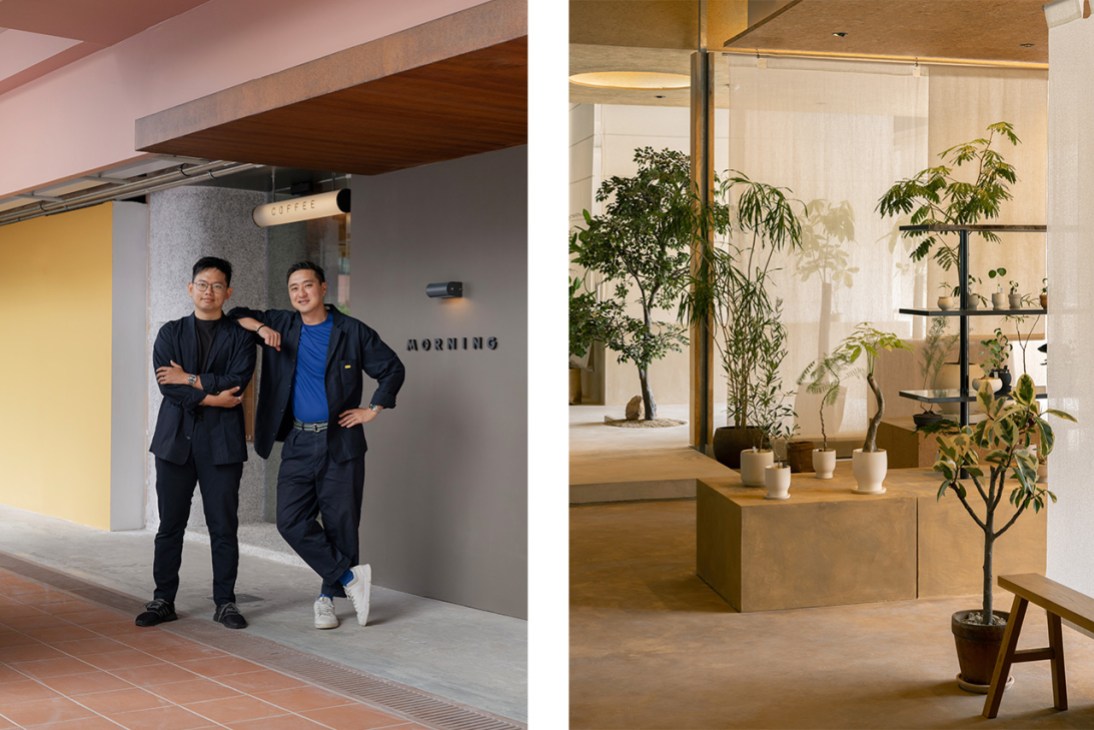
Over dinner at Marcy’s on Duxton Road I discussed the matter with the seafood bistro’s owner, Goh Tong Hann, who returned to his native Singapore after a stint in New York and is now patiently building a small but influential F&B outfit called Pleasurecraft Group. While he insists that his success has been a matter of luck, Hann has also demonstrated a handy resourcefulness. Rather than forking out for expensive refits, for instance, he has put his talents into designing the restaurants (see Chinese restaurant Maggie’s for a flavour) and has quickly pivoted on concepts and spaces that weren’t working. It’s a post-pandemic success story among all too many less fortunate ones.
To see where rampant price inflation leads, you need only wander through one of the umpteen over-air-conditioned malls stuffed with samey international shops that have little in the way of personality. If Singapore wants to remain an exciting place to eat, drink and shop – and end the lazy chatter about it being boring once and for all – then it can’t afford to overlook the cost conundrum. It’s the city’s vibrancy that will suffer if rents continue to rise unchallenged.
Fehnert is Monocle’s editor. For more on the New Bahru development, read our report here. And for tips to help you get the most out of your stay in Singapore, read our City Guide.
When I boarded a plane last weekend to attend the spring/summer 2026 edition of Milan Fashion Week Men’s, which concluded yesterday, I knew that this would be a different kind of show season. First, there were notable absentees: many of the usual headliners, from Gucci and Fendi to JW Anderson, chose to sit out this year’s event as they attempted to rebrand and rethink their strategy under new executive teams.
Given the wave of hirings and firings that has been sweeping through luxury houses, it didn’t come as a surprise. But this was the first season in which the effect of the industry’s HR crisis was so visible. There was less excitement or novelty on the runways than in recent years and fewer international attendees too. The disruptive cycle doesn’t seem to have reached its end either: yesterday, Prada announced the departure of its CEO, Gianfranco D’Attis, just a few days after Francesco Risso stepped down from his position as creative director of Milanese label Marni and Ben Gorham left beauty label Byredo, which he founded in his native Stockholm in 2006. The biggest news, though, was François-Henri Pinault handing the reins of Kering, the luxury group founded by his father, to former Renault CEO Luca de Meo.
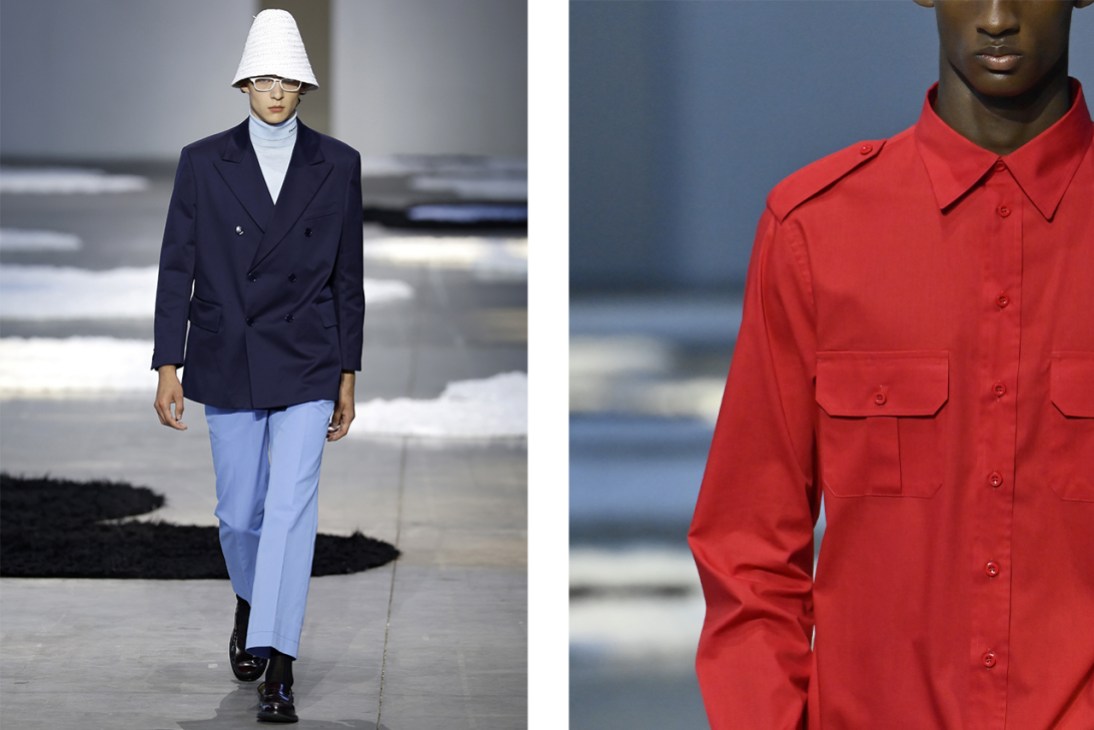
However, there are brands proving that they have lasting power, delivering artisanal quality and desirable collections season after season. At Brioni, Norbert Stumpfl has continued to refine his tailoring with feather-light fabrics; Canali has crafted leather outerwear inspired by vintage cars; meanwhile, Zegna’s Alessandro Sartori continues to raise the bar with new fabric innovations, from washed silks to hand-woven suede cardigans that take as long as a year to craft. In most cases, the winning businesses are still run by their founding families, with a clear vision about who they are and a strategy of pursuing slower growth.
Like other industries, fashion is also having to grapple with the current geopolitical situation. News of the US bombing of Iran broke hours before the Prada show in Milan, where models walked to an ominous soundtrack, though they were wearing optimistic primary colours. “What can we do but try to put a smile on people’s faces?” said Raf Simons, the brand’s co-creative director, while a pensive Miuccia Prada nodded in the background. “We have been trying to change the tone to something more gentle, looking to nature,” she said. “It’s the opposite of aggression, power and nastiness.” In such moments, big thinkers such as Prada are the ones who will hold on to their relevance. As Milan passes the baton to Paris Fashion Week Men’s, which starts today and runs until 29 June, all eyes are on the larger-scale luxury houses to see who will rise to today’s challenges.
Here, we round up the brands that stood out in Milan and approached a testing season with grace.
The British delegation
With London Men’s Fashion Week cancelled, the UK’s leading menswear names are making a new home in Milan, where they can continue a dialogue between the worlds of British and Italian tailoring. Paul Smith, who is usually a regular in Paris, chose to invite the industry to his own Milanese showroom – a modernist space near Porta Romana – for his Milan Fashion Week debut. “[Owning property] is a big advantage, especially in this world that we live in,” said Smith backstage. His spring/summer collection, which featured sleek pinstripe suits and splashes of vibrant colour inspired by the bazaars of Cairo “and all the trinkets you discover in a street market,” offered a much-needed moment of lightness – as did Smith’s joyful skip down the showroom stairs before taking his final bow.
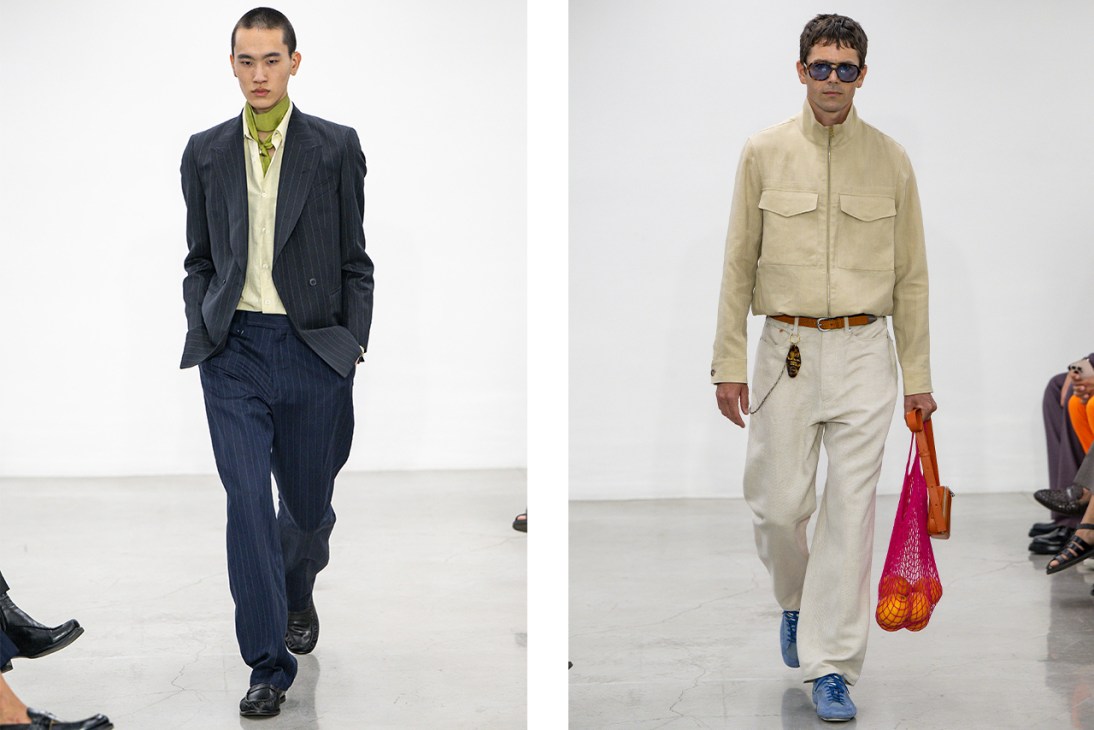
A day later in a hidden Milanese garden, Simon Holloway, creative director of London-based label Dunhill, presented a more formal version of British tailoring, while still sprinkling the right touches of humour: bright stripes and straw hats for garden parties, with patterned ties and linen suits channeling Bryan Ferry. “I love that [Ferry] wears the most classic, English clothing but maintains a cool factor – it’s a studied kind of wardrobe,” said Holloway during a preview. His precision is a joy to observe: everything is considered, from the vintage watches and signet rings accessorising his looks to the impeccably groomed dogs walking down the runway alongside some of the models. It’s no wonder that he has reignited interest in Dunhill so quickly.

A welcome return
Off the runway on the quiet Via Bigli, Turkish designer Umit Benan opened the doors to his first boutique – a space dressed in dark mahogany inspired by yacht interiors, filled with mid-century design pieces. His collection of relaxed tailoring, cotton basics and intricate tunics is on show alongside Jacques Marie Mage eyewear and jewellery. Head downstairs to place a bespoke order and keep an eye out for more retail projects from Benan. With a new investor on board, the designer is broadening his ambitions and plotting openings in more fashion capitals in the near future.

Armani reigns supreme
This season we lost a moment that never fails to bring a smile to even the most stone-faced of fashion editors: Giorgio Armani didn’t take his famous finalé bow, as he was recovering from a short bout of illness at home. But the two collections presented by his teams (for his eponymous label as well as for his Emporio Armani line) were still momentous. At Emporio Armani, the audience was brought to Central Asia by way of Africa. Armani revisited his love of travelling and discovering new cultures by adding patterned tunics, intricate bead embroidery and crocheted bags to his usual repertoire of silk sets, collarless shirting and loose tailoring. His consistent commitment to elegance, refinement and trend-free design is a breath of fresh air during a time when the fashion industry’s constant search for novelty is getting old.
Natalie Theodosi is Monocle’s fashion director. Look out for reports and interviews from Paris this week on monocle.com and Monocle Radio. And subscribe to never miss a beat.
1.
Paris
Best all-rounder
Our city of the year. The French capital’s strengths are multitude.
“I can honestly say that there’s no city in the world in which I would rather live,” says Charles-Antoine Depardon, an architect and advisor on urban development to Paris’s city council, as he strolls through the Tuileries on his way to work at the Hôtel de Ville. “It is an extraordinary cocktail.”
Depardon might be biased but on a spring morning, as the French capital’s avenues resound to the click-clack of hard leather shoes on spruce concrete, it’s hard to argue with him. Last year’s Olympics provided Paris with the platform to showcase its chic 21st-century self. The city delivered a rousing performance that also served as a fitting coda to a decade of revival under mayor Anne Hidalgo, whose ambitious (and, sometimes, controversial) urbanism interventions have made it cleaner, greener and safer, while maintaining and protecting the things that give it its inimitable charm. Paris in the 21st century looks a lot like it did in the 20th century but that’s a large part of the appeal. And today it is also a more international, outward-looking city than it has ever been.
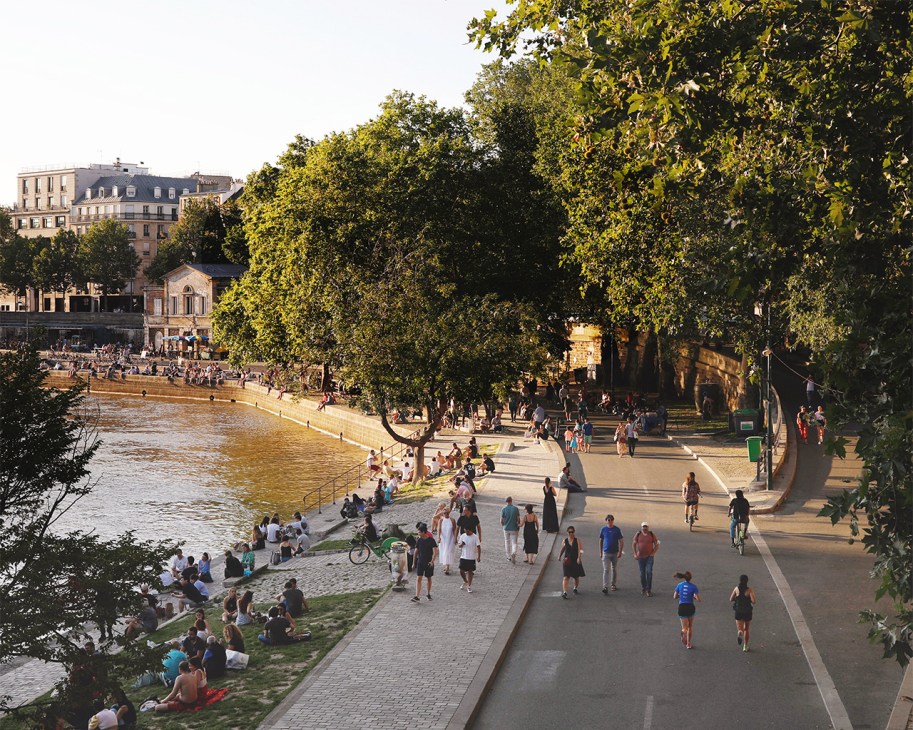
One of the most notable changes has been the huge expansion of the cycle-lane network, which led to bike usage doubling between 2023 and 2024, and the overhaul of the once-creaking Métro, the backbone of which is the speedy new Line 14. This takes passengers from Paris-Orly Airport in the south to the new Saint-Denis Pleyel station in the north in just 40 minutes.
Meanwhile, in its bid to become the greenest major city in Europe, Paris has embarked on a gargantuan effort to plant 170,000 trees by 2026. At the time of writing, more than 120,000 are in the ground, many of which will be used to cultivate new urban forests, such as the one inaugurated in June 2024 at the Place de Catalogne. “Paris is a far more pleasant place to live today,” says Lindsey Tramuta, a journalist who hosts a podcast called The New Paris and has called the 11th arrondissement home for 19 years. “It was always a beautiful city to walk in but that’s even more the case now.”
When Baron Haussmann reimagined Paris in the 19th century, he made its streets more spacious and airy, and therefore less susceptible to disease and crime. Today there remains a steadfast commitment to prioritising quality over quantity when it comes to designing the urban environment. The draw of the city’s cultural behemoths – such as the recently renovated Tadao Ando-designed Bourse de Commerce – remains world-beating, as does its retail prowess.
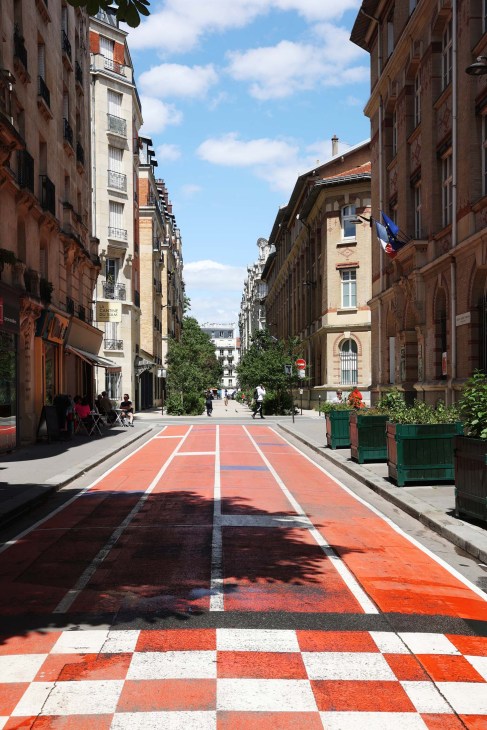
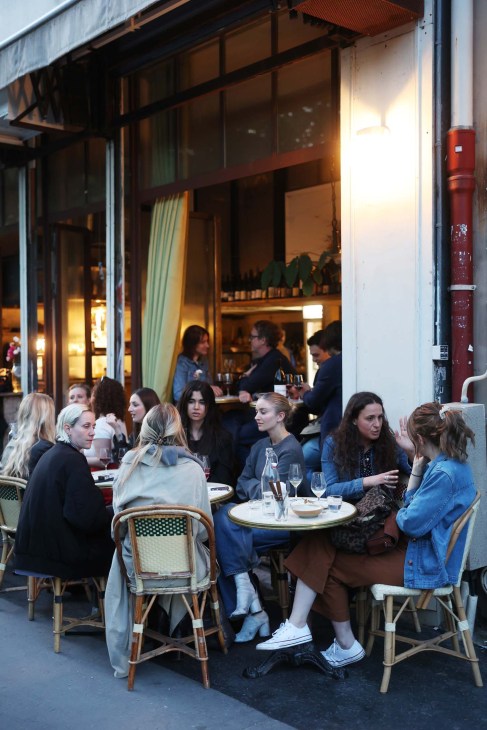
All of this, combined with the policies of the country’s most pro-business president in a long time, has helped Paris to draw and foster enough talent to snatch London’s double crown as Europe’s top venture-capital city and its leading technology hub. “Paris lends itself far more to an office-based culture than cities such as San Francisco or London,” says Jordane Giuly, the founder of fintech company Defacto. He points out that the French capital’s gentle density is conducive to cross-pollination between start-ups and preferable to the vast distances that one needs to traverse in its rivals.
That said, even with the recent business boom, property prices in Paris have fallen over the past two years. Though some areas remain pricey, the city has largely kept its soul, in large part due to housing policies that have helped to keep low-income residents and their businesses in the heart of the city. More than a quarter of Paris’s inhabitants live in social housing, while small businesses, such as neighbourhood butchers and the city’s famous independent bookshops, have benefited from measures protecting their existence. This idea of mixité sociale (socially and economically diverse districts) has also helped to inject new life and dynamism into a gastronomic scene that had begun to feel threatened by rivals – and now some waiters, like many of the new business owners, are even happy to speak English. C’est la vie!
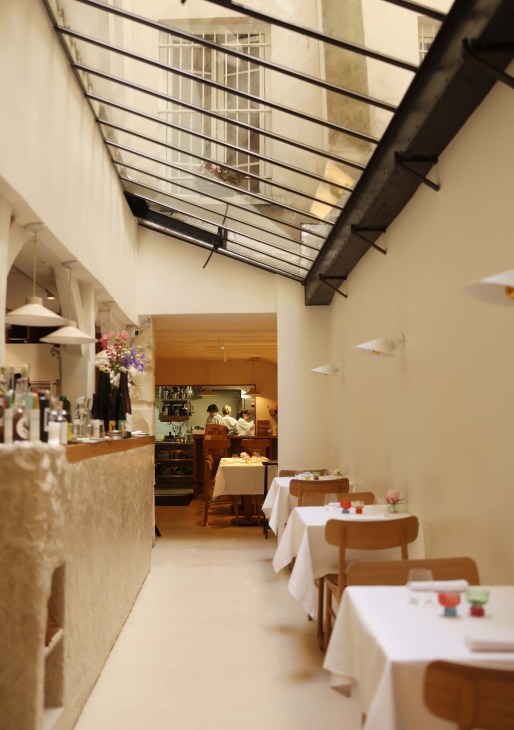

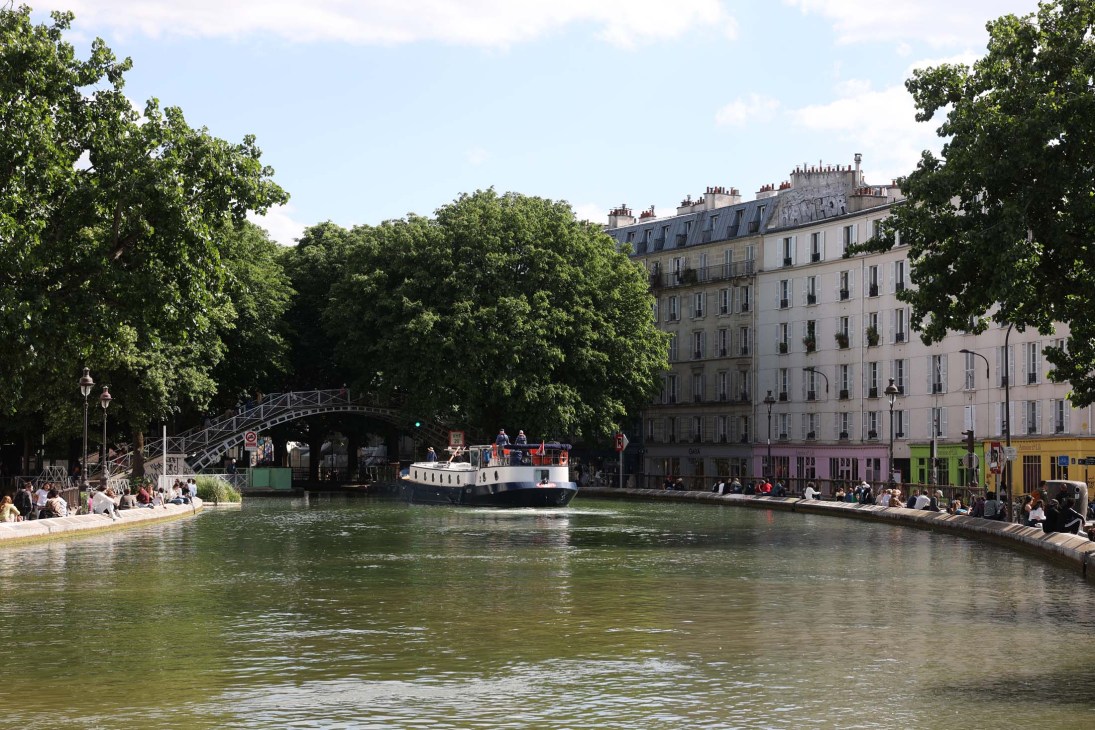
1. Population: 2,048,472 (metro: 12,271,794)
2. Average working week: 35 hours (mandated by French law)
3. Number of Michelin-starred restaurants: 123
4. Cycle lanes: more than 1,000km
5. Number of museums within city limits: 136
Click here to enjoy the full Monocle city guide to Paris
2.
Madrid
Best for health
A favourable work/life balance and delicious food are a winning formula in the Spanish capital.
On a sunny Friday morning in late May, Madrileños of all ages roam the counters at Mercado de la Paz, browsing fresh fish caught that morning, glowing red tomatoes and cheese from all four corners of the country. This Salamanca institution is one of dozens of mercados in the Spanish capital – food markets found in almost every neighbourhood that hint at why Madrid’s citizens are such a healthy bunch. The city has the highest life expectancy (86.1 years) of any metropolis in Europe.
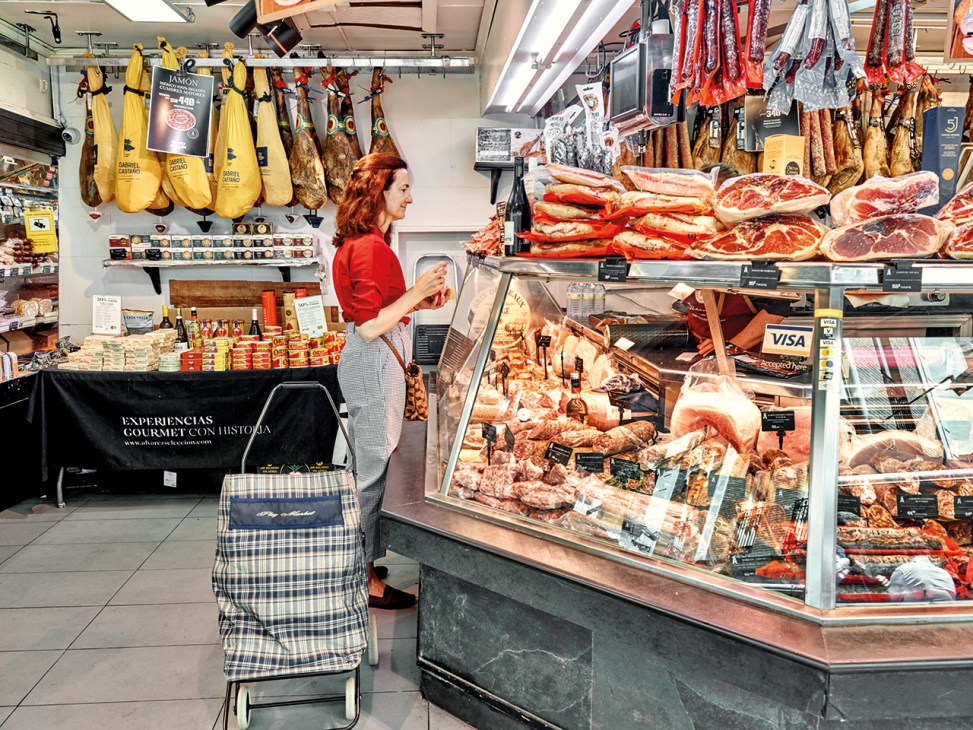
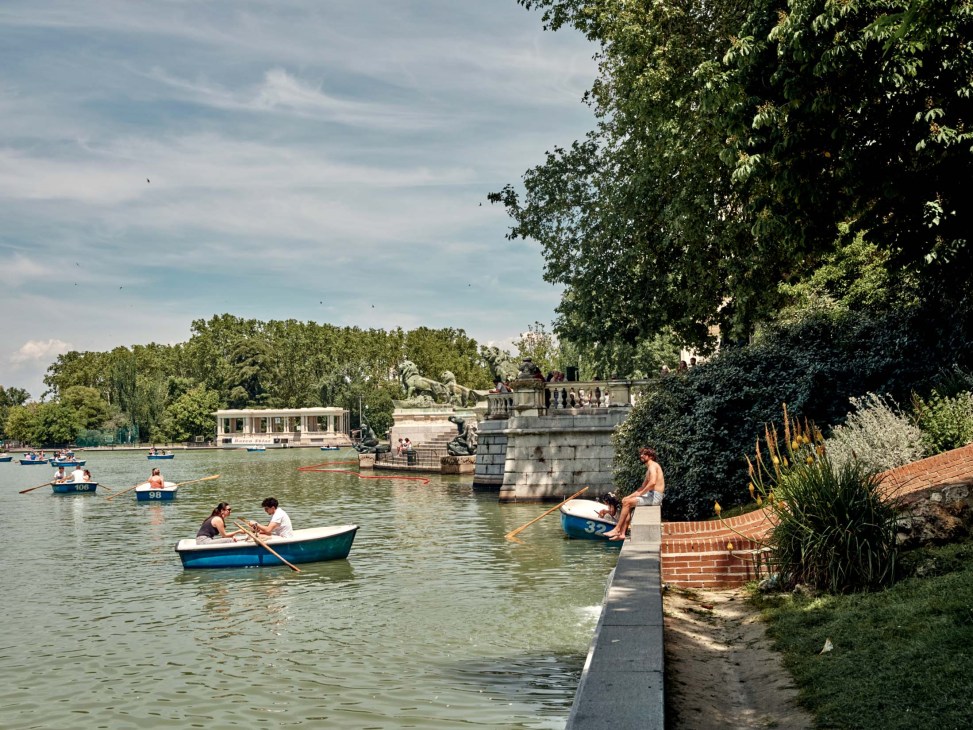
These figures are down to a unique combination of assets – meteorological, economic and social. Excellent weather and food, strong intergenerational bonds and a natural gregariousness mean that residents work to live rather than live to work. “Socialising is very Madrileño,” Manuel Martínez-Sellés, the president of the city’s Official College of Physicians, tells Monocle. “Keeping physically and intellectually active benefits both the quantity and the quality of life.”
Then there’s the city’s excellent healthcare. Spain is renowned for its public hospitals, which combine the best in training with an almost unparalleled (in Europe, at least) system of data-gathering. As a result of decades of centre-right dominance, the Madrid region now has the highest private health-insurance coverage in Spain about 37.5 per cent. “Good public-private collaboration often allows for more efficient and decisive medicine,” says Martínez-Sellés. “In Madrid we have the best hospitals in Spain, 11 medical schools (more than many European countries), the nation’s leading biomedical research centres, strong and responsive primary care, shorter waiting lists for surgery than in other regions, very active prevention and early diagnosis programmes, and exemplary out-of-hospital emergency services.”
But Madrileños know that health is about more than medicine. Their wellbeing is rooted in socialising and outdoor activity, and this includes, for many, a regular glass of wine and slice of jamón ibérico. Walk Madrid’s plentiful plazas on any night of the week and you will see children kicking a ball around while the adults enjoy el paseo, the traditional twilight stroll, or knock back a crisp glass of beer. A quarter of Spaniards smoke and alcohol remains a part of daily life but an acceptance of the importance of these things at a social level is part of what makes the people of this city such an outgoing – and therefore longer-living – bunch.
Spanish urban planning has helped communities to flourish and loneliness is less common than elsewhere. “Healthy ageing is about enabling people to continue doing what they value as they grow older,” says Vânia de la Fuente-Núñez, a doctor, anthropologist and expert in ageing. “It shifts the focus away from simply having or not having a disease and instead looks at how well a person functions and feels in their environment.” De la Fuente-Núñez serves on the board of Grandes Amigos, a Madrid-based non-profit that promotes intergenerational relationships and addresses social isolation among older people. The organisation runs a volunteer network that promotes interaction between people of all ages and support for the elderly.
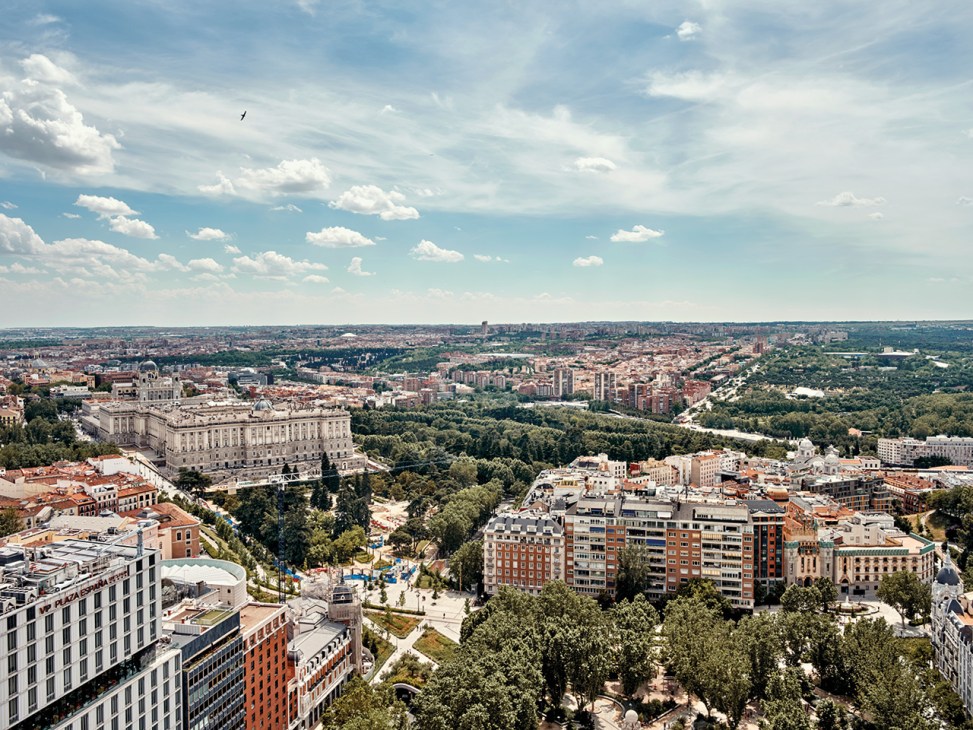
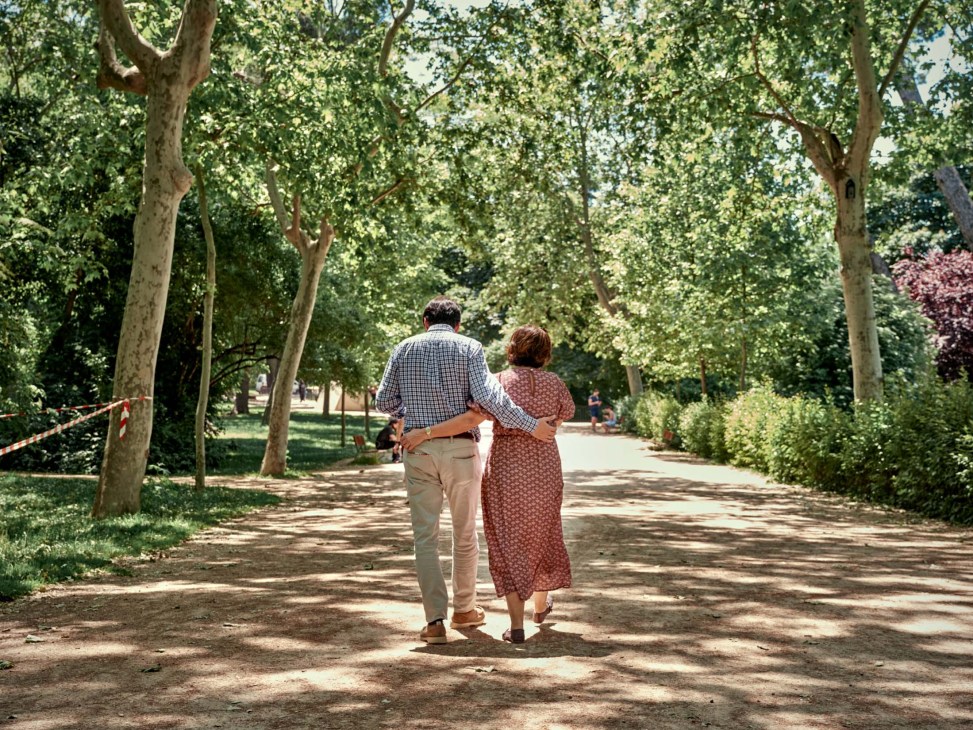
Of course, all of this jollity is more than helped by the weather. With as many as 3,000 hours of sunshine a year, Madrileños are often to be found exercising, jogging or cycling around the city’s 60 sq km of green space, swimming in one of its 25 public pools or playing tennis or padel at one of the 698 public courts. For less sporty residents, simply wandering the city’s streets on a sun-soaked evening is a life-enhancing, and possibly extending, experience.
1. Population: 3,460,491 (metro: 6,798,000)
2. Life expectancy: 86.1
3. Number of municipal food markets: 45
4. Number of medical schools: 11
5. Average retirement age: 65.5 (women), 64.7 (men)
3.
Athens
Best for nightlife
The Greek capital is never boring and one of Europe’s few truly 24-hour cities.
More than 15 years since a debilitating debt crisis, the Greek capital has become the discerning night owl’s stamping ground. The country’s economy grew by 2.3 per cent in 2024, which, while not exactly stratospheric, is enough to elicit envious glances from its Western and Northern European counterparts. Athenians now speak of those dark days of high inflation and unemployment as being in the past and, in hindsight at least, it seems that this ancient city was able to turn adversity into opportunity, kick-starting a cultural renaissance that has transformed abandoned spaces and post-industrial areas into some of Europe’s most exciting nightlife spots.
At 02.00 on a Friday night, people fill Menaichmou Street in the buzzy Neos Kosmos neighbourhood, glasses in hand. Their laughter and chatter compete with a wall of sound emanating from the street’s many establishments, including natural wine bar Epta Martyres and spritzeria Bar Amore. It’s the same story on Meandrou Street in Ilisia, where Junior Does Wine rubs shoulders with Quinn’s; and Vissis Street, once known only for its hardware shops, which is now home to cocktail hub Kennedy among other excellent bars. All typify the way that an infusion of young, creative people from across the globe has invigorated a once slightly sleepy and rundown city. “In the summer, everyone spills out onto the street,” says Eleni Georgiou, a young jewellery designer. “The atmosphere is lively yet laidback. It’s like the whole city becomes one big open-air gathering.”
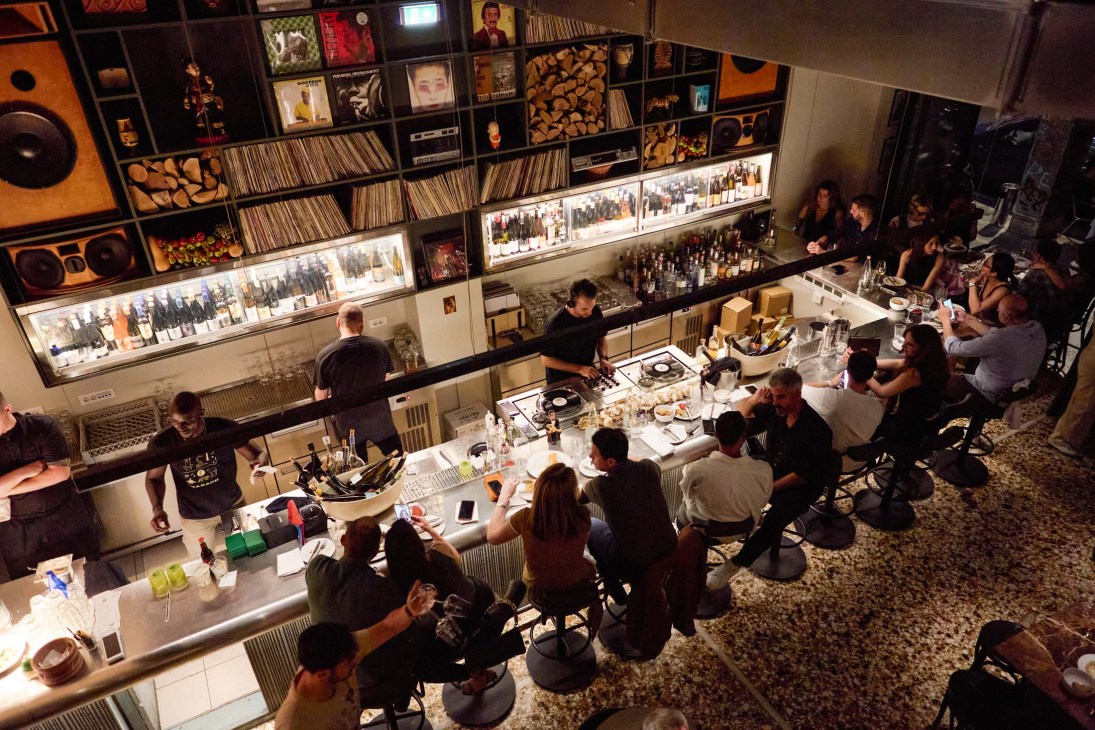
A relaxed attitude towards licensing laws might be assumed as a given in this part of the world but Athens’ laissez-faire approach is born more of political than geographical circumstances. After the fall of Greece’s military junta in 1974, a country that had been denied individual freedoms was fierce about protecting its hard-won rights.Twenty years later, in 1994, a stern-faced minister for public order, Stelios Papathemelis, introduced a law mandating nightclubs to close at 02.00 to rein-in a perceived air of permissiveness. Contravention of the “Papathemelis Law”, as it came to be known, became a badge of honour in Athens and today clubs, especially in areas such as Exarchia, stay open as long as there are people inside having fun.
A post-pandemic boom in tourism has transformed Athens from a stop-off en route to the islands into a destination city. In 2024, 7.9 million people visited the Greek capital, a 12 per cent increase on the year before. Many of these came to see the Acropolis but others were here to experience a place that is being explicitly marketed as a 24-hour city. The Athens Metro – which is being significantly expanded with the construction of the new Line 4 – runs from 05.00 until 02.00 on weekends. Anyone looking to travel between 02.00 and 05.00 will find that taxis are both cheap and plentiful.
Though an influx of affluent foreigners has led to a rise in prices, especially in the property market, Athens remains affordable compared to other European cities – a glass of wine costs, on average, less than €6. Starting a meal at 22.00 is not unusual for Greeks, especially during the hot summer months, and when you eat late, you drink, dance and go to bed late too. It’s not just the hardcore ravers who leave the clubs at 07.00 in July. Those coming out blinking into the dawn light might take a trip to Metaxourgeio for a restorative spanakopita (spinach pie) or gyro, while, for the more adventurous, there’s always the short metro ride to the beach.
Whereas many other cities, especially in Europe, have been on a trajectory of diminishing nightlife returns over the past 10 years, Athens is dancing to a different tune. As Nena Dimitriou, writer of the weekly “Café-Bar” nightlife column in the Athenian daily Kathimerini puts it, “No one is ever bored in Athens.”
1. Population: 643,452 (metro: 3,638,281)
2. Average price of an Aperol spritz: €7.50
3. Weekend opening times on the Metro: 05.00 – 02.00
4. Average closing time of bars: 02.26
5. Number of stops on the Athens Metro: 66
Click here to enjoy the full Monocle city guide to Athens
4.
Barcelona
Best for urban greening
The Catalan capital is proactive about enacting radical policies and its approach to the environment is achieving solid results.
After three years of drought, the return of rain to Barcelona this spring was more than just a meteorological relief: it marked a moment of renewal for a city that’s doing more than most to stay in step with nature. The Spanish phrase “En abril, aguas mil” (“In April, a thousand rains”) was uttered with smiles, as residents joked about living in London or Paris. And when the sun came back out, Barcelona looked greener than ever, in more ways than one.
Faced with issues such as increasingly regular water shortages, pollution and population density, the city adopted a strategy to green its streets and public spaces. The flagship Superilles (Superblocks) initiative – first proposed by environmental researcher Salvador Rueda and trialled by city hall in 1993 – has rethought car-dominated intersections in favour of people-first places lined with trees, shaded areas and space for community life to blossom.
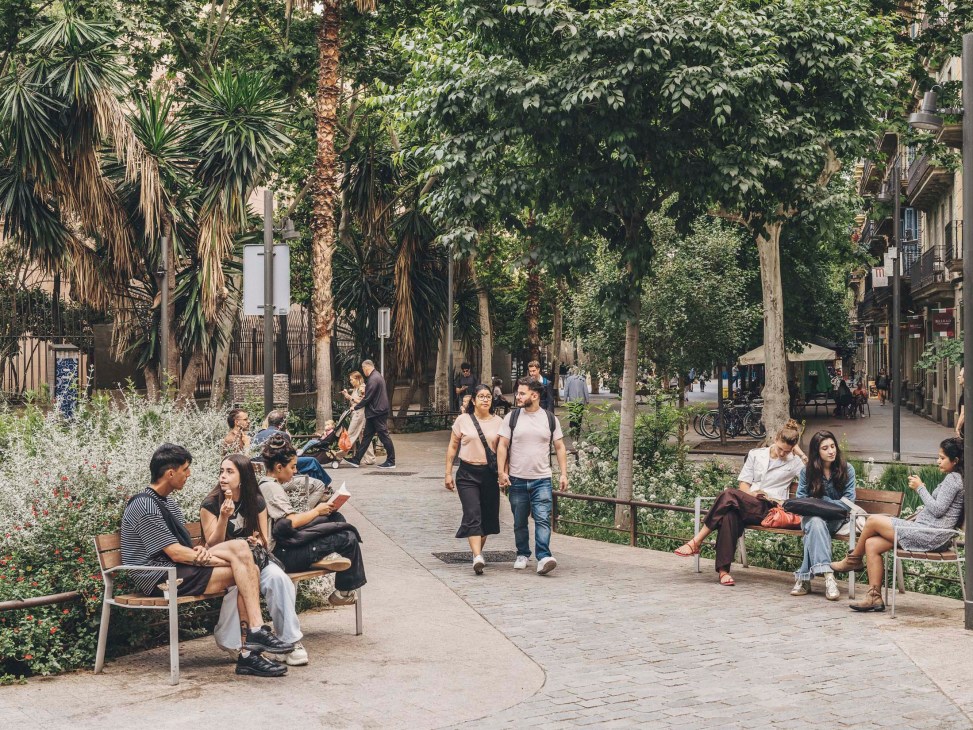
On a recent morning, the intersection of Girona and Consell de Cent streets, now a bustling square, was busy with people chatting on benches, tourists sipping coffee on the terrace of Bar Betlem and older folks pausing for respite from the sun under a plane tree. In Barcelona, life happens on the street. If you offer residents space to socialise, they’ll use it. The shift away from cars brought less visible but real benefits, including a 22 per cent reduction in co2 emissions, preventing hundreds of deaths each year. Small businesses on newly pedestrianised streets also had an increase in footfall as people chose to walk these greener, cooler, calmer routes. Bird life has benefited too. There are now more than 80 species nesting across city parks.
Alongside the broader Pla Natura scheme for planting is the new Parc de les Glòries, a 4.3-hectare green space with broad promenades and more than 9,000 sq m of vegetation. The redevelopment brought swaths of land into community use, planted more than 1,000 trees and stitched together a new green corridor in the heart of the city. But the strength of Barcelona’s approach is in smaller, more targeted solutions. Participatory digital tools for citizen feedback, such as Decidim, have helped residents to have a bigger voice in shaping their city. “Barcelona also shows how micro-greening solutions, such as pocket parks and green roofs, can offer access to nature even in compact areas,” says Amalia Calderón Argelich, a post-doctoral researcher at the Barcelona Lab for Urban Environmental Justice and Sustainability. “Inclusive design practices – such as improved lighting, accessibility and safe park layouts – are adaptable models for dense cities.”
Liveability is the aspiration but, as in many great cities, there is a tension between plans and outcomes. In the Poblenou neighbourhood, where the 22@ project transformed an industrial zone into a gleaming district of green avenues and modern infrastructure, property prices have soared by almost €3,000 per square metre in just 10 years. With this shift has come accusations of gentrification with the loss of the neighbourhood’s former identity and the displacement of its residents. “Though greening plans are ambitious, gaps persist,” says Calderón Argelich. Gentrification and “touristification” remain hot topics as every new park can trigger a rise in house prices. Without some protective policies and civic oversight, says Calderón Argelich, well-meaning projects risk undermining the equity that they aim to promote. “Resilience depends on protecting these frameworks from political volatility.”
1. Population: 1,600,000 (metro 5,300,000)
2. Total area of municipal green spaces: 2,784 hectares
3. Total reduction of carbon emissions due to the Superblocks programme: 22 per cent
4. Number of stations on Barcelona Metro: 165
5. Total distance of cycle lanes in city: 268km
5.
Vienna
Best for housing
The Austrian capital’s architecture and social housing stock are the envy of the world.
In October 1930, Vienna’s socialist mayor, Karl Seitz, gave a speech at the opening of a new housing block, the Karl-Marx-Hof. “When we are no longer here, these stones will speak for us,” he said. Today the building that he was inaugurating is probably the best known of Vienna’s Gemeindebauten, social housing that has become emblematic of the city’s high quality of life. Nearly a century on, some 6,000 Gemeindebau flats are still built every year, in a continent where many cities have given up on the principle of social housing. The new ones are less monumental than their forebears but the tradition of naming them after eminent public figures remains. Karl-Seitz-Hof opened in 1931.
Housing authorities have also stuck to the principle of distributing council flats across all districts to prevent economic segregation. Another key plank of urban cohesion is the comparatively generous income cap for applicants: €59,320 a year for a single person and €88,400 for a couple at the time of writing. The upshot is that more than half of Vienna’s two million residents live in some form of subsidised housing, whether in Gemeindebauten or state-supported co-operatives. One of the better-known examples of the latter is the sprawling Alterlaa complex (pictured) in the city’s south, home to about 10,000 people and an architectural pilgrimage site for many visitors to the Austrian capital.
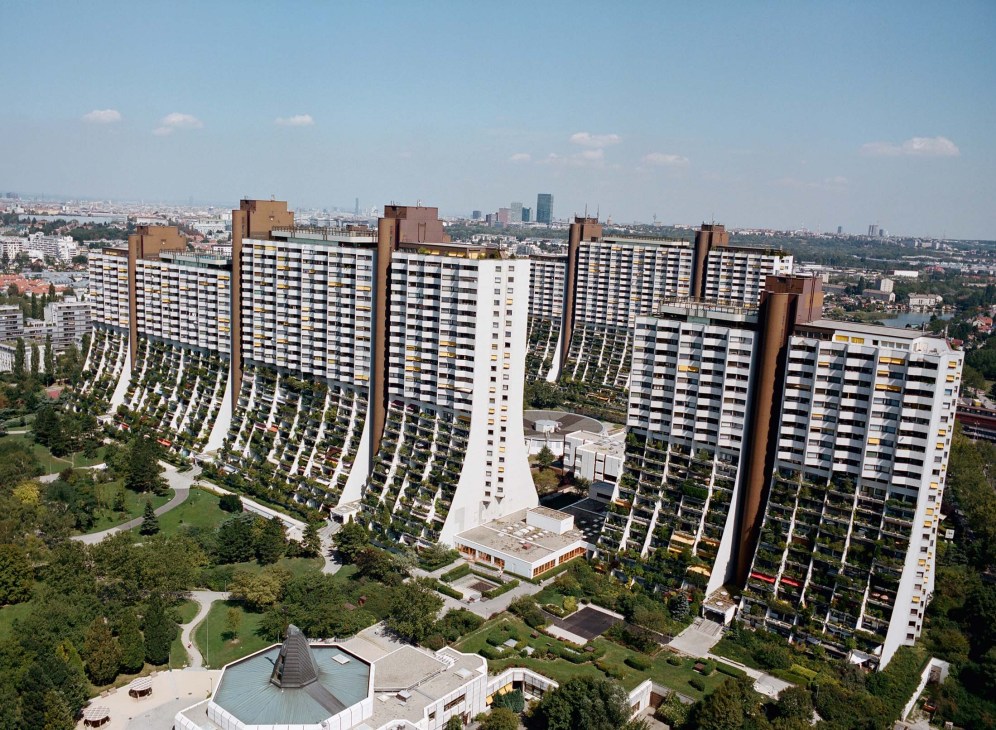
Freelance journalist Susanne Jäger has lived in her 43 sq m council flat in the heart of old Vienna since 2014. She also spent part of her childhood in municipal housing. “The Gemeindebau programme has always been part of my life,” she tells Monocle in her Fischerstiege apartment, which is across the road from Vienna’s old city hall. On the ground floor is an office of the Social Democrats – the party of Seitz and the current mayor, Michael Ludwig – alongside a bookshop and an after-school care centre for residents. Jäger hadn’t planned to stay long but the low rent – about €370 a month without utilities a decade ago, now €420 – persuaded her otherwise. “I was never offered a better deal,” she says. She is also struck by the city’s efforts to support tenants who are in difficulty. In her hallway, a poster from city hall reassures residents that they won’t be left in the lurch if they fall behind on payments. “Vienna is the only landlord that tries to keep you in rather than kick you out,” says Jäger.
Of course, social housing is only one strand of Vienna’s mixed housing stock. Roughly a third of the population lives in privately rented flats, with one in five of those in buildings constructed before 1945 – the so-called Altbauten (“old builds”). Most are solidly built, with thick walls, high ceilings, grand tiled entrances and fabulous façades (especially the Jugendstil buildings from the 1890s and 1900s). Balconies or terraces are rarer but there’s often a large courtyard, or Hof, and sometimes a private back garden. The Altbauten are highly sought after, with prices per square metre ranging from about €6,200 in the eighth district to €19,000 in the first. Rents, however, are far more manageable, hovering between €14 and €20 per square metre for both old and new.
Vienna is still very much a city of renters and their rights are staunchly defended, especially in older properties. Homeownership is fairly modest compared to other European capitals, accounting for less than 20 per cent of the population – though that might soon change. Though construction has slowed somewhat, attractive new developments are springing up citywide: in the Nordbahnviertel, near the Danube, on the site of an old railway station, and in Aspern Seestadt on the northeastern fringe. The latter is one of Europe’s largest urban development schemes. In a city where housing is treated as a right rather than an asset, these particular Neuebauten attract less local ire than they might elsewhere.
1. Population: 2,005,760
2. Average proportion of income spent on rent (for a one-bedroom flat): 21 per cent
3. Proportion of population in social housing: 60 per cent
4. Average rental cost: €3.87 per square metre (social housing), €10.40 per square metre (private sector)
5. Number of new social housing units built per year: 6,000-7,000
Click here to enjoy Monocle’s full city guide to Vienna
6.
Zürich
Best for mobility
The city that spawned its own transport model isn’t resting on its haunches.
In 2024, Verkehrsbetriebe Zürich (VBZ), the body that owns and operates Zürich’s transport network, recorded approximately 304 million annual passengers across its buses and trams – a 2.1 per cent increase on the previous year. For Switzerland’s largest city, which has spawned a set of much-imitated but never bettered mobility policies known collectively as the Zürich Model, it was further proof that superiority need not induce complacency. The most appealing cities reflect the best things about their nations (as most of this line-up can attest) but perhaps nowhere is that more in evidence than on Zürich’s transport network, which exudes a Swiss air of efficiency. “Where else do passengers greet you when they’re getting on and off?” asks Sinan Yigitler, a bus driver who moved to Zürich from Germany with his family. Could it be that a calm, clean and cheap transport experience makes passengers more cheerful?
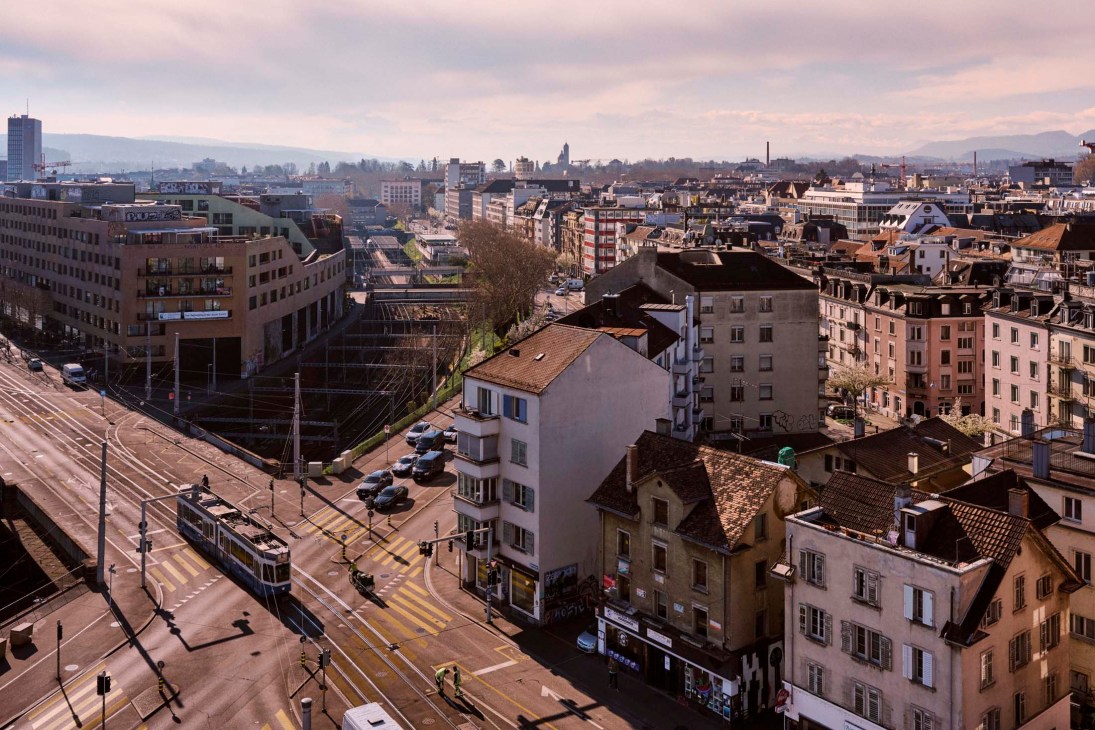
An enduring symbol of Zürich is its tram network. Pale blue and white, these sleek road trains glide through leafy boulevards and along lakefront promenades, the doleful clang of their bells and the soft whoosh as they pass providing the city’s muted soundtrack. Since 2002, Zürich’s buses have run for 24 hours on weekends, ferrying home the stragglers from bars and clubs as the city settles into silence.The Zürich model grew out of a realisation on the part of the city’s government in the 1960s and 1970s that it had to offer public transport of a high-enough standard to tempt commuters out of their cars and so avoid gridlock on its streets (nearly 280,000 people commute into Zürich every day a number not far off the city’s population of 360,000).Today, 327 intersections are equipped with sensors that detect approaching vehicles and adjust signals to prioritise the transit of trams and buses over cars.
But the city’s ambitions go well beyond trams and buses. The Zürich Model places great value on modal split, meaning that all facets of the network must be constantly improved to ensure the vitality of the whole. Under the government’s 2030 bike plan, the number of cycle lanes and cyclist-first traffic lights are due to be expanded, while its 2040 mobility strategy focuses on connecting the fast-growing northern and western suburbs to the rest of the city. Projects such as the Tramtangente Nord, a planned orbital tram line that binds outer districts without passing through the city centre, aims to improve capacity where it’s needed most.
“We need to redistribute street space to give more room to pedestrians and cyclists,” says Simone Brander, the head of Zürich’s civil engineering and mobility department. This ethos is deeply felt by the people who operate the system too. “It’s an important part of my life and the people here are like my second family,” says Astro Ajvazi, a VBZ instructor who trains the next generation of tram operators.
1. Population: 448,664 (metro: 1,450,000)
2. Annual public transportation ridership (2024): 665 million passengers (11 per cent increase on the previous year)
3. Proportion of tickets purchased on mobile phones: 70 per cent
4. Number of sensors monitoring traffic throughout the city: 4,500
5. New cycle lanes currently planned or under construction: 130km
Click here to enjoy Monocle’s full city guide to Zürich
7.
Mexico City
Best for conviviality
Mexico City is attracting those seeking quality over quantity.
For many people in Mexico City, the weekend officially kicks off at about 14.00 on a Friday. In the leafy neighbourhoods of Condesa and Roma, streetside cafés and restaurants fill with residents and visitors alike, seated at tables spilling onto the pavements. Food has always been an important part of Mexican culture and people here have access to a good bite no matter their budget, whether it’s tacos from a street vendor or silver service. A long lunch is more than just eating: it’s an opportunity to savour time with friends and family, embracing the tradition of sobremesa – an unhurried meal in which diners linger around the table for hours.
Mexico City’s laid-back attitude, which extends far beyond the dining table and into everyday life, is luring many from afar. The city’s population grew by 600,000 between 2019 and 2023 – much of that influx from the US and Canada, countries to where Mexicans have traditionally emigrated. It’s proof that the city’s way of life is catching on. “The people here value quality of life above many things,” says Adolfo López-Serrano, a resident and founder of communications company Base Agency.
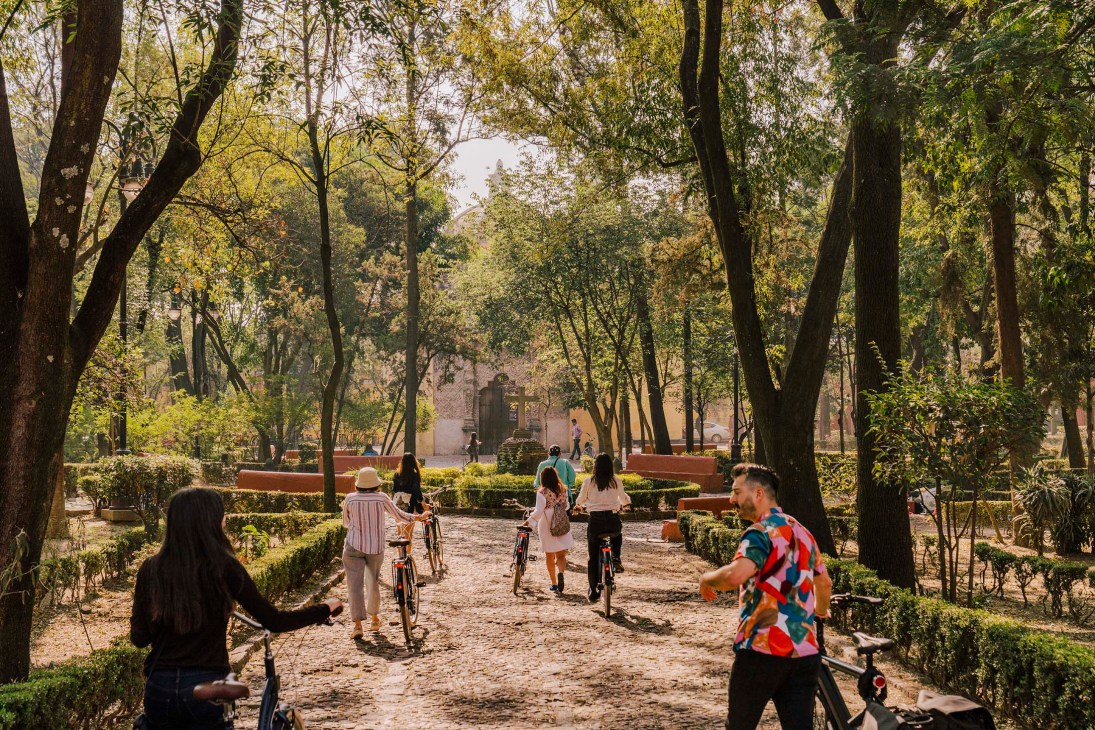

Despite being one of the biggest and most hectic cities in Latin America, many neighbourhoods here, such as Condesa and Coyoacán, offer a small-town feel, with inhabitants waking to the sound of birdsong. “The urban fabric is very nice and there’s also great architecture,” says Rodrigo Rivero Borrell, founder of property developer Reurbano. He notes that neighbourhoods around the Paseo de la Reforma were developed consciously, with wide avenues.
“The city is designed for movement, with walkable streets and good public transportation in the central areas,” says López-Serrano. There are almost 400km of bike lanes, which is remarkable for Latin America, and the Metro, with 12 lines covering more than 226km, is the second largest on the continent. The city also has one of the best-connected airports in the region, with direct flights to more than 100 destinations, including London, Los Angeles, Madrid, New York, São Paulo and Tokyo.

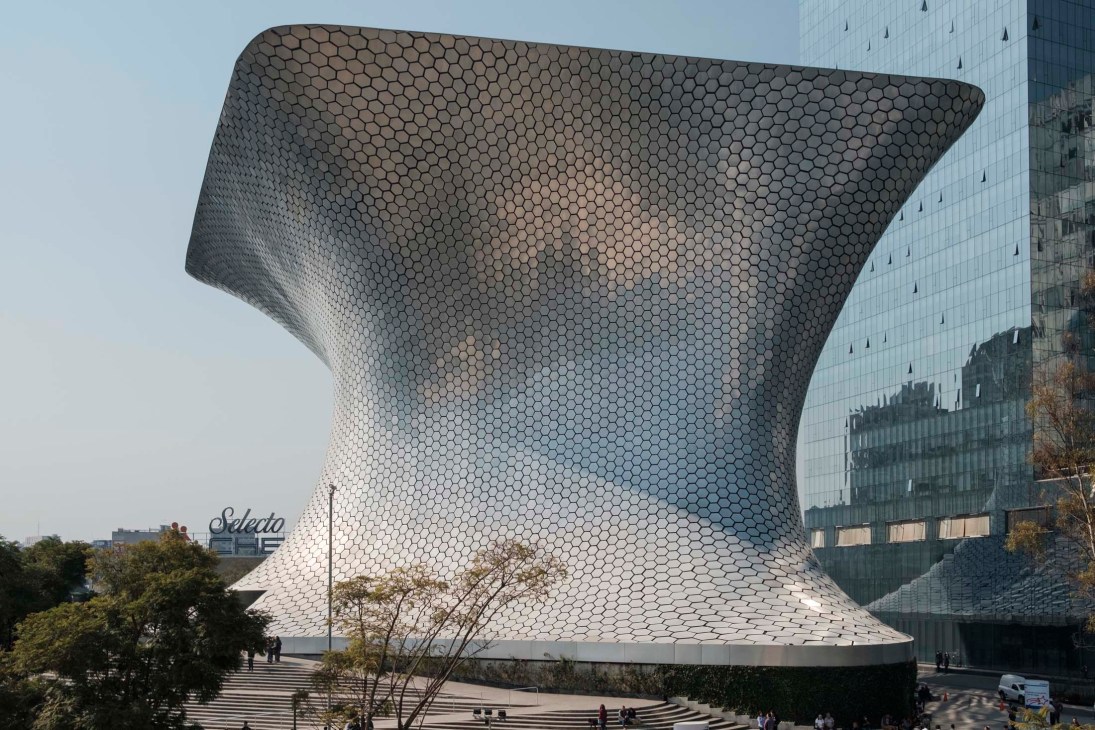
Outsiders tend to find Mexico’s capital very inviting. “Being a Latin society, it’s a welcoming place,” says Rivero Borrell. “People want to engage.” It’s also ideal for those seeking to build a business. López-Serrano describes it as “a city where chaos and order happen at the same time, creating the perfect playground for creatives and entrepreneurs”. He adds that in Mexico City, “You can be scrappy and resourceful, and push boundaries. Yet the standards for design, culture and innovation are remarkably high.”
Certain neighbourhoods are astonishingly green. In an effort to improve air quality and mitigate the effects of climate change, more than 44.2 million trees, shrubs and ground covers have been planted throughout the city since 2019, according to Mexico City’s environment ministry. “The central areas are well serviced in terms of parks and public spaces to maintain a healthy lifestyle,” says Rivero Borrell. Being outdoors is woven into city life and you’ll always find people walking their dogs, exercising or dancing salsa in one of the 244 parks or plazas here. There are few better ways to foster a sense of community.
1. Population: 9,209,944 (metro: 23,146,802)
2. Typical closing time for bars: 03.00-04.00 (on weekends)
3. Number of stations on Mexico City Metro: 195
4. Average price of a house: MX$3.9m (€178,000)
5. Number of public museums: More than 180
8.
Lisbon
Best for safe streets
Crime rates continue to fall in this sunny metropolis by the sea.
Speak to one of the hundreds of thousands of Brazilians who call Lisbon home – the largest immigrant community in Portugal – and safety will almost certainly emerge as one of the reasons for their move. In this respect, Lisbon has become the gold standard for many. Europeans and Americans who have recently flocked to the city also cite security as an important factor in staying. “I can walk down any street at any time without having to look behind my back,” says George Dellinger, who moved here from New York in 2022. “I don’t feel vulnerable. There’s a sense that people look out for each other.”
Lisbon has evolved over the past decade from a somewhat sleepy town into a dynamic European capital and it has impressively done so without compromising on the safety of its residents. Crime in the capital is consistently low compared to other European cities; Portugal’s latest annual homeland security report indicates that in 2024 there was the steepest drop in the crime rate (excluding the anomalous pandemic years) in more than 10 years: a fall of 7.6 per cent in Lisbon’s metropolitan area. It also points to a 1.8 per cent decrease in violent crime, with even bigger drops in the city proper.
That said, statistics don’t always tell the full story. Safety is also a collective sentiment and, recently, a few widely publicised violent incidents have rattled some sectors of society and inflamed political rhetoric. Lisbon’s mayor, Carlos Moedas, has acknowledged the public’s unease and called on the government for increased policing in the city.
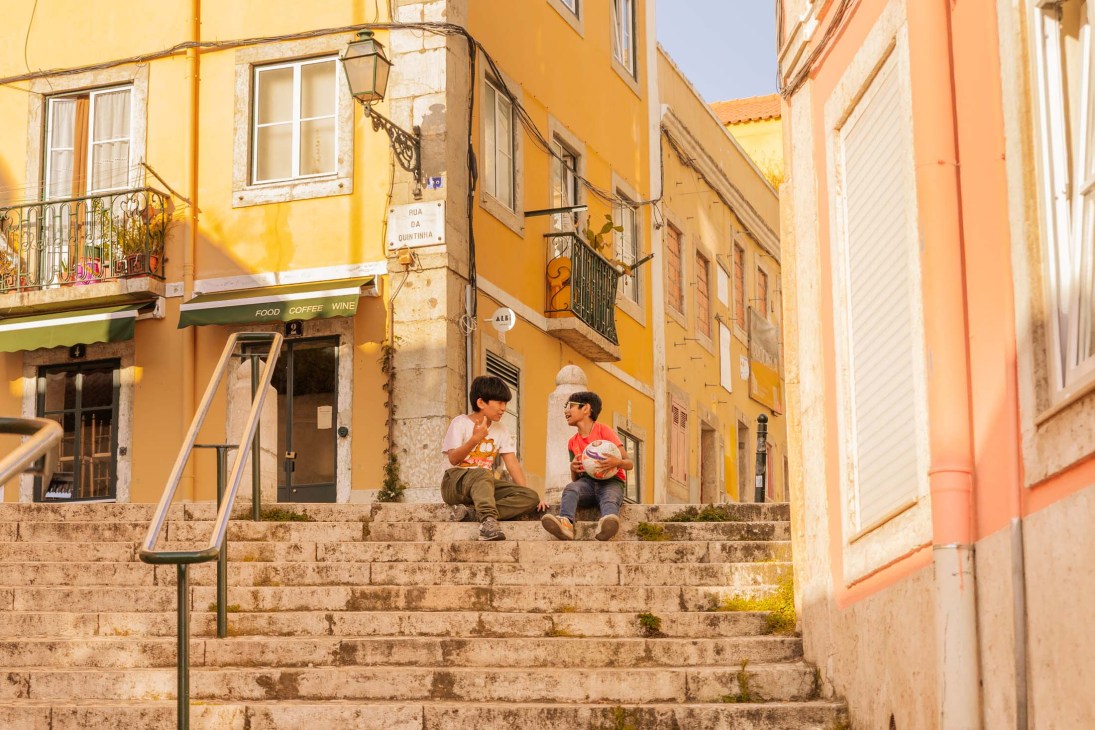
But, as ever in Lisbon, a lot of emphasis has been placed on community policing, a preventive and participative approach that has garnered attention from across the globe. In contrast to the stock response of cities faced with security issues – more CCTV or increasingly heavy-handed policing – Lisbon invests in more integrated forms of safety that put trust and a human presence at their centre. Police officers are assigned to neighbourhoods for the long term, fostering familiarity with citizens and partnerships with neighbourhood associations and social services. The constant dialogue between these groups means that the police are better equipped to address problems as they arise and deal sensitively with issues around drug use or homelessness through dialogue.
Like any city shaped by tourism, Lisbon has pockets where petty theft is common, especially in the historic downtown areas. But when it comes to the kind of ambient, everyday safety that allows one to move through public space without thinking too much about it, Lisbon continues to offer a rare kind of freedom. An intuitive way to grasp this is by noticing how schoolchildren make their way through the city. They’re often unaccompanied, navigating public transport and streets with an ease that recalls a different era. For parents it’s a powerful indicator. “The number of times I’ve left my purse on the pram while running after my boy in the park… I would never think of doing that in London,” says Perrine Velge, who moved from the UK capital to Lisbon in 2020.
Another indicator can be seen when going out at night. Like other Mediterranean cities, Lisbon has a late-night culture that is dominated not by heavy-drinking young people but a relaxed mix of ages. Eating out, strolling home or sharing a glass of chilled white port in a neighbourhood bar remain part of everyday life, unmarred by disorder. Feeling physically safe in some Western cities is no longer taken for granted, if indeed it ever was. Lisbon is a rare outlier.
1. Population: 567,131 (metro: 3,049,222)
2. Number of municipal police officers: 6,700
3. Murder rate: 1-2 per 100,000 inhabitants per year
4. Year-on-year reduction in reported crimes: 7.6 per cent
5. Number of additional CCTV units planned this year: 99
Click here to enjoy Monocle’s full city guide to Lisbon
9.
Tokyo
Best for cleanliness
Tokyo’s spruce streets and responsible citizens set the benchmark.
For a city of 10 million people – and that’s just the 23 central wards – Tokyo is bafflingly clean. (The population balloons to 44 million if you take in the greater Tokyo area.) To understand why, look at how the Japanese capital operates in the morning. Rubbish vans trundle along residential streets, with binmen jogging alongside their vehicle as they grab bags of meticulously separated household refuse. Meanwhile, an army of kanrinin, the caretakers who look after Tokyo’s apartment blocks, mop entrances and put out rubbish. Shopkeepers and café owners spruce up the area in front of their establishments, picking up any stray litter and cigarette ends (banning street smoking has improved that situation no end).
Volunteers are also out in force. In fashionable Omotesando, a band of hairstylists from some of the dozens of salons in the neighbourhood are in green bibs, picking up litter before opening time. Over by Shibuya station, another group of volunteer helpers – schoolchildren and pensioners – are tackling the detritus on one of the world’s busiest pedestrian crossings.
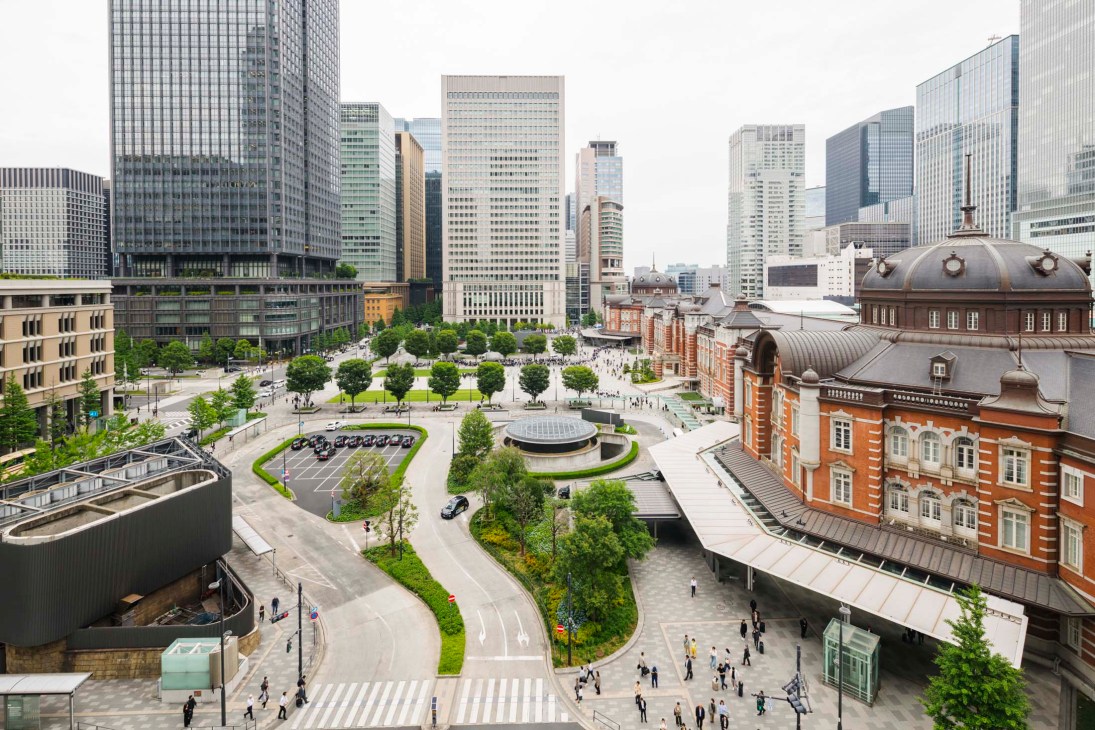
The lack of street bins is no surprise to anyone who lives here (most disappeared after the deadly sarin gas attack in 1995) and people expect to have to look after their own litter. The sticking point has come with the arrival of unprecedented numbers of tourists who are not necessarily on the same page garbage-wise. It’s not that visitors are looking to dump rubbish but they’re often unsure what to do with their plastic cups and bottles. Overflowing bins are never a good look so refuse-flattening smart bins are being introduced to busier streets and tourist sites.
Public toilets have had a major upgrade in Shibuya with the Tokyo Toilet project, in which 16 creators (including architectural A-listers such as Tadao Ando and streetwear legend Nigo) designed public conveniences that not only look good but come equipped with Toto Washlets and are kept spotlessly clean by a team of people who wear natty boilersuits (as seen in Wim Wenders’ film Perfect Days). Architect Kengo Kuma designed one comprising five wooden huts in Shoto Park. He called it a “public toilet village that is open, breezy and easy to pass through”. The project’s organisers consider clean, well-lit, fully accessible public toilets essential to any city and even “a symbol of Japan’s world-renowned hospitality culture”.
As in every city, there’s graffiti in Tokyo (though not in the same quantities as elsewhere). Clean & Art, a group led by artist Ken Sobajima, is on a mission to eradicate the blight. Passers-by applaud Sobajima and his team as they paint over unwanted scrawls and restore walls. “I used to think that nobody cared,” he says. “But once I talked to people, I discovered that everyone was bothered by it.”
As with most aspects of daily life in Japan, there are deeper philosophical reasons for this preoccupation with spotlessness. Shinto, Japan’s native religion, demarcates clean and unclean spaces, a division that affects everything from the sumo ring to the home. Children absorb this distinction between clean “inside” and unclean “outside” early.
All of this isn’t to say that there’s no rubbish in Tokyo but, overall, it’s much tidier than other cities of a comparable size. Tokyo spends a fortune on keeping things presentable. The Clean Authority of Tokyo’s waste management budget for the central wards is ¥105bn (€640m) this year, of which ¥83bn (€507m) is dedicated to cleaning. But the secret to the city’s sparkle is that it’s not simply the work of city employees: it’s a collective job.
1. Population: 14,000,000 (metro: 41,000,000)
2. Number of public toilets: 53 per 100,000 residents
3. Annual municipal solid waste produced: three million tonnes
4. Recycling rate: 20 per cent (nationwide)
5. Number of municipal green spaces: 159
Click here to enjoy Monocle’s full city guide to Tokyo
10.
Tallinn
Best for start-ups
Estonia’s capital continues to attract entrepreneurs seeking Nordic-style living without the high price tag.
The Estonian capital is well known for its leafy streets, medieval architecture and raucous nightlife – but it’s increasingly gaining a reputation for its close-knit entrepreneurial network and world-leading digital infrastructure.This is aided by the fact that nearly everyone speaks English, rents are affordable and it’s a mere 10-minute drive from downtown to Tallinn airport, which has direct flights to 60 international destinations. Throw into the mix Europe’s highest number of unicorns per capita, a dense network of venture-capital firms and a steady pipeline of technology talent, and Monocle’s 2025 Best for Start-Ups award feels like a shoo-in.
“Estonia is particularly good for digital infrastructure,” says Martin Sahlen, who moved from New York to Tallinn to launch fintech business Alvin.ai. “It’s a very entrepreneurial country and there is less red tape.” He set up his company in the district of Telliskivi, the epicentre of Tallinn’s vibrant start-up scene, where co-working spaces such as Lift99 sit alongside excellent and affordable restaurants and bars, such as Pudel and Juniperium, and a growing number of museums and cultural venues, including Fotografiska.
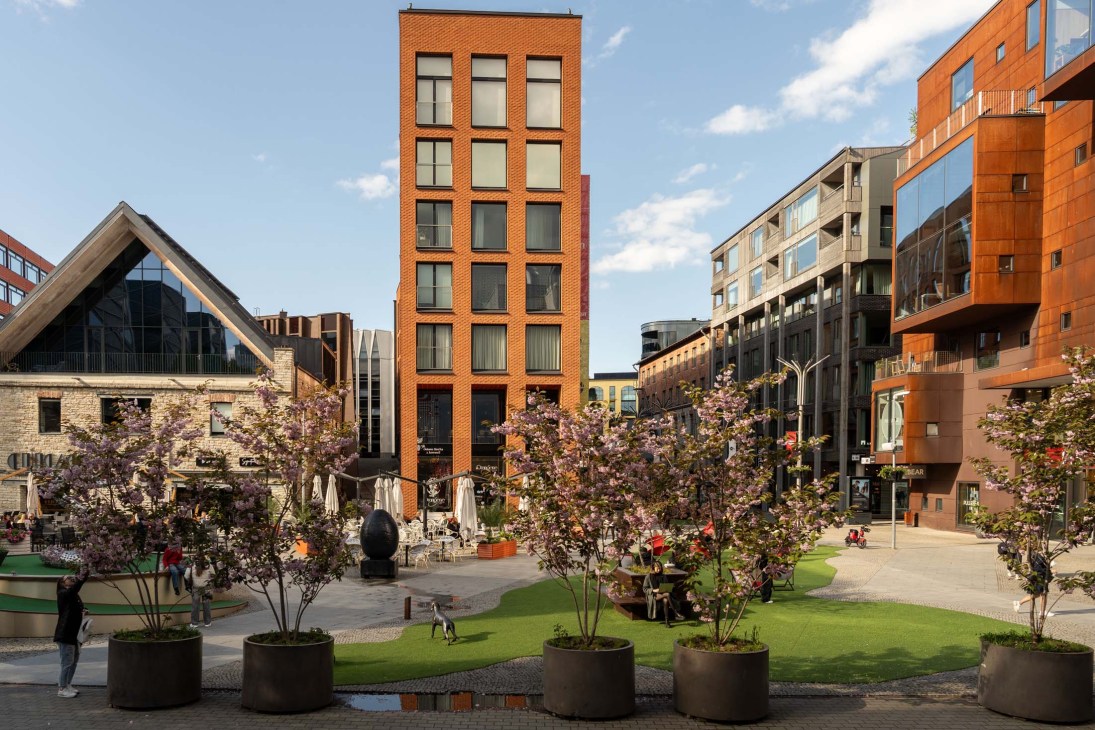

Another draw for entrepreneurs is Estonia’s e-residency programme, through which non-nationals can open and manage an EU-based business entirely online, no Estonian address or presence required. Almost everything, from company registration to tax filings, is handled digitally, which means that the actual starting-up process can take just minutes. Taxes, meanwhile, are only applied when profits are distributed – a boon for early- stage reinvestment.
Yet Tallinn’s real draw is its people. “We are really like a community,” says Irina Tokareva, a hub administrator at Lift99. “All foreigners are friends from the first minute.” According to Tokareva, approachability defines the culture here. “You don’t need to book a call through two assistants,” she says. “You can just write to them and say, ‘Hey, I’m building this and I’d love to show it to you,’ and they’ll answer.”
This openness extends to the top of government. Like his predecessors, Estonia’s prime minister, Kristen Michal, has hosted round tables with start-up founders to better understand their needs. Public support is structured too: Startup Estonia, a government-backed initiative based in Ülemiste (another business zone that’s home to dozens of start-ups), plays a central role in connecting newcomers to networks, resources and funding. “If you look at the people who are building new start-ups, they often have backgrounds in multibillion-euro businesses such as Skype, Wise, Pipedrive and Bolt,” says Mirjam Kert of Startup Estonia. “Since 2010, more than €4.5bn has been invested in Estonian start-ups, 92 per cent of it from foreign investors.”
“I chose Estonia because it’s in the same time zone as Kyiv and it was really cheap compared to, say, Berlin or London or New York,” Ukrainian founder Alexander Storozhuk, who relocated his media-technology firm PRnews.io here, tells Monocle in his office at Porto Franco, looking out at the dozens of boats bobbing in Tallinn’s sunny harbour. Safety and quality of life were decisive factors too. “My eight-year-old daughter walks home alone from school and I’m always confident of her safety,” says Storozhuk. Between the agile public services, a highly international founder base and the Nordic-style liveability (minus the price tag), Tallinn punches well above its weight. For founders looking for speed, support and a city where big ideas travel fast, Estonia’s capital is a smart place to start.
1. Population: 461,000 (metro: 550,000)
2. Number of international destinations served by airport: 44
3. Average top-tier office rent: €22 per square metre (2023)
4. Personal income tax: 22 per cent
5. Average price of a cappuccino: €3.60

A wide-brim hat, forest-green pants and a short-sleeved khaki shirt with an arm patch featuring a bison and a sequoia tree. This ensemble is instantly recognisable around the US as the uniform of a National Park Service (NPS) ranger. High summer is their busy season – last year the national park system saw a record 331.9 million visits. Why tinker with something that unites Americans of all political stripes? Nevertheless, in keeping with its record so far, the current administration is looking to upset the apple cart.
In the name of cost savings, bean counters at the Department of the Interior are wondering whether states can oversee hundreds of lesser-known sites. Can Kentucky sweep the porch at Abraham Lincoln Birthplace National Historical Park and California sound the foghorns at Golden Gate National Recreation Area? The Trump administration signalled that the NPS will retain crown jewels such as Mount Rainier, Glacier and Zion – essentially, those with “National Park” in the name. The optics of a closed visitor centre overlooking the Grand Canyon or a shuttered ranger station in the shadows of mountainous Grand Teton were ruled an unthinkable embarrassment.

While superficially not a boneheaded idea, there are two problems with this proposal. The first is a corrosion of national identity at a time of deep political division. Red-state Americans should feel as entitled to traipse down Boston’s Freedom Trail as blue-state Americans are to imagine the shots that started the Civil War at Fort Sumter in south Carolina. If their respective states managed these historic sites, some of their heft as vignettes in the country’s story would be lost.
The park service was hailed by documentary filmmaker Ken Burns as “America’s best idea,” long acting as a soft-power arm of the US government, internally and abroad. Visitors from around the world flock to natural wonders, including Yosemite and Yellowstone, while the service has sent staff on multiyear international missions to advise on park planning over its century-long history.
The second issue, and more disconcerting aspect, is the uncomfortable heritage that will fade without imprimatur of the government. Last summer I visited the Minidoka National Historic Site in southern Idaho, a barren, windswept desert where thousands of Japanese citizens and US citizens of Japanese descent were incarcerated during the Second World War. My tour was led by the great-granddaughter of those who were imprisoned, and she narrated the concentration camp’s history with aplomb – all while wearing NPS insignia. It was a powerful testament to a mature country; one willing to invest its resources in memorialising shameful chapters. As the ranger explained on the tour of threadbare barracks, Idaho’s then-governor was none too keen on hosting Japanese wartime prisoners – and, given the state’s political complexion today, it’s hard to imagine that Boise legislators would spend a dime on upkeep.
Throughout the summer, the parsimonious tenants of the Department of the Interior are requiring the NPS to post signage asking for public feedback on anything that visitors feel portrays US history in a damaging light. It will lead to a long winter of whittling away nuance and complexity in the extraordinary and checkered heritage of my country. Come next summer, I fear, national parks will be a tarnished shrine to American greatness.
Scruggs is Monocle’s Seattle correspondent. For more opinion, analysis and insight, subscribe to Monocle today.
When I was living in Naples for a short while, I had a friend, Antonio, who would let out a scornful “pah” every time I asked him to name the best example of a particular thing in the city: the best pizza, the best coffee, the best art gallery. He would retort that “you Anglo-Saxons” are obsessed with ranking things and that reflects how we see the world: in purely competitive, hierarchical terms. The implicit corollary was that Italians focused a little more on living in the moment and had a richer, more spiritual culture as a result.
I’m not so sure that Antonio’s Law, as this theory might be called, is particularly watertight – plenty of things can quite objectively be judged better than others – but I have thought about it every time that I’ve begun the process of putting together Monocle’s annual Quality of Life Survey. The 18th iteration features in our July/August 2025 issue, out today. And so, at the risk of incurring yet another “pah”, how does one rank a thing so multifaceted and protean as a city?
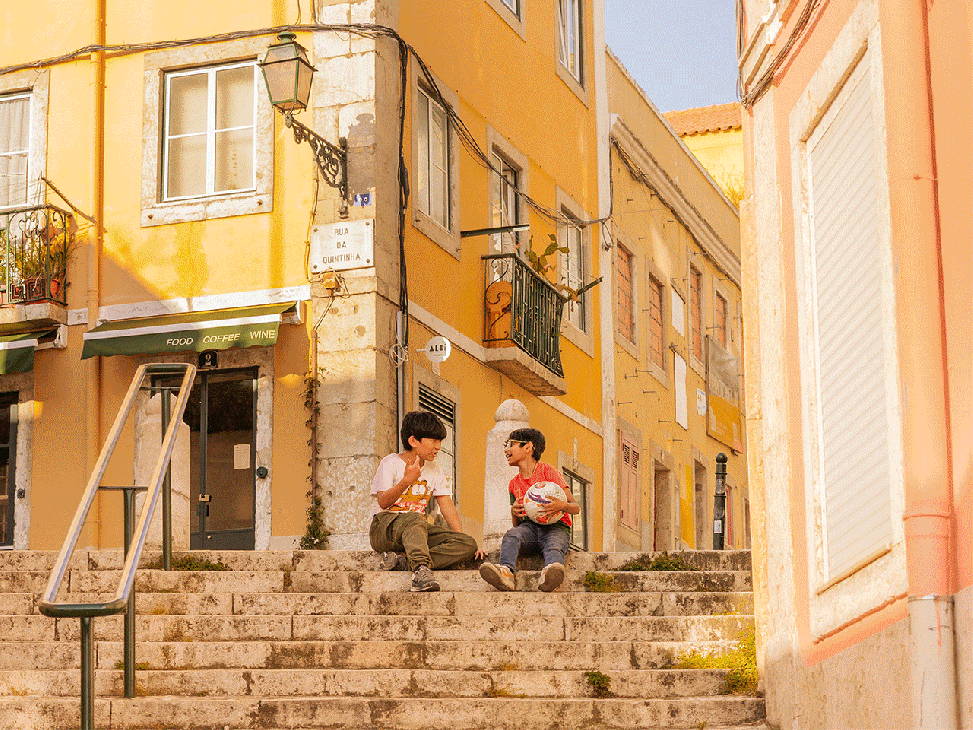
The index began as an antidote to the bloodless, data-driven liveability indexes then proliferating (this is the late 2000s we’re talking about). Tyler and Andrew’s contention was that cities weren’t a collection of statistics but living, breathing things. As such, they should be judged not just on GDP per capita and ambulance-waiting times but on aesthetic merit and whether or not you can have a good night out during the week.
Of course, these qualitative and quantitative measures produced a lot of data that had to be parsed and then melded into a sort of coefficient. This endeavour rewarded a particular kind of city, usually one with a population of around two million, blessed by nature and socioeconomics and, most often, Mitteleuropean. Places such as Geneva and Munich are lovely, liveable cities but this year we wanted to do something a little different. Rather than create a top-20 ranking of the world’s best overall metropolises, we have decided to award 10 cities across just as many categories, including one all-rounder. We considered healthcare, green spaces, security, transport, cleanliness, conviviality, nightlife, economic dynamism and housing – but spotlighting these criteria has allowed one or two lesser-exalted locales to sing. I hope that you enjoy reading it. If you have any questions about our method (or, as you might see it, our madness) then please do get in touch.
For our full line-up, including the city that offers the most favourable work/life balance, the locals that are never dull and the most convivial capital, click here.
In the summer of 2007, Monocle launched its inaugural Quality of Life Survey as we searched for the best cities in the world to call home. Though other city-ranking indexes existed, we felt that they came to some poor conclusions. Had their compilers, we wondered, ever looked up from their spreadsheets of metrics to ask a few simple questions: is this city, which sounds good on paper, a fun place to live? Is it accepting of outsiders? Can you go to a bar at 01.00? Is it easy and pleasant to get around by foot, tram or bicycle? We were suspicious that the authors of these reports, well-meaning statisticians, hadn’t visited all of the cities that they lauded. So we saw an opportunity to create a survey that homed in on true liveability – what it was really like to reside in a place. Yes, we would gather statistics but we would also ask our network of correspondents and editors to tell us what was really happening in their hometowns.
Not surprisingly, some cities have always flourished in our survey – often medium-sized metropilses that have invested wisely in infrastructure for generations, have nature on their side and sit in wealthy nations. So, this year, we wanted to put more cities in the spotlight – places that might struggle to get to the front of the pack if you take in every data point but are clear winners when you consider one key metric. I won’t spoil all of the fun here but for 2025 we have chosen 10 winners – yes, we have an overall champion but also nine more cities that deserve to be garlanded for their safe streets (without having your every move watched on CCTV), start-up culture and nightlife. Congratulations to all of the upstarts that made the podium this year.
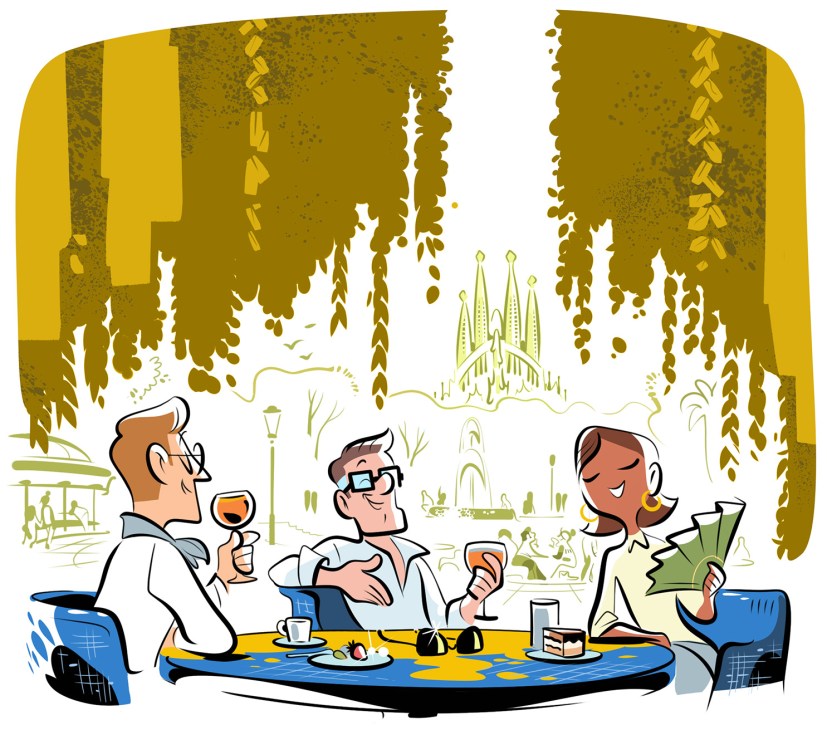
While we’re on the topic of Quality of Life, are you coming to our annual conference on this very subject? It’s taking place in Barcelona from Thursday 4 to Saturday 6 September. There’s a welcome reception on the first day, followed by a day of talks and panels looking at how we can improve our cities, retail, hospitality and the world of work – and a fun dinner that night. Then, for the final day, after breakfast, we have organised trips to ateliers, galleries and more, all with special access. There’ll be no lanyards; you’ll be looked after by Monocle staff; and, by the end of the event, you will have met numerous people with ambitious ideas and great perspectives on the world. You can sign up at monocle.com/events or email my colleague – and head of events – Hannah Grundy at hg@monocle.com.
In 2023 we organised another one of our talk series, The Weekender, in Asheville, North Carolina. We had a great few days exploring the city as we met chefs, campaigners and ceramicists, and we had a pop-up shop at Citizen Vinyl. Being in this lush outpost in the Blue Ridge Mountains was a special experience. It’s why last September’s news that whole parts of the city had been washed away in the floods that followed Hurricane Helene really hit home at Monocle. For this issue, Alexis Self visited the city to see how it has responded and how the determination of people to rebuild has come to the fore, even as huge challenges remain. Perhaps that’s something else we should evaluate when creating our city survey: the ability of a community to come together, to find common purpose.
This being summer – in the northern hemisphere, at least – we have also ensured that this issue has plenty of moments of pure joy. We have dedicated our Expo to 21 things to make your summer pop (from the perfect sliders to the best outdoor cinema) and, in our culture pages, have compiled a sunny checklist of music, books and films to entertain you on your poolside lounger.
And there’s one final story, also in culture, that’s important to highlight: our report on kiosks. Magazines such as Monocle only thrive in cities that care about having an informed and entertained citizenry. It’s painful to watch as city halls hand the licences for their kiosks to people who just want to use them to sell soft drinks. The reason why kiosks fail is that they don’t have inspirational owners. If you don’t believe me, meet the people who keep their city’s kiosks thriving. We need these media stars.
Finally, thank you for reading Monocle – whether purchased from a newsstand or as a subscriber (well, you do get a discount on your conference ticket). As always, feel free to drop me an email – at@monocle.com – with ideas, feedback or just your Barcelona confirmation.
There’s perhaps no urban issue that vexes and divides us as much as housing. Everyone who lives in a city should be able to find a safe and comfortable abode but even when we treat that aspiration as the bare minimum, we quickly move on to perilous ground once we start debating the issue’s myriad other conundrums.
Ours is a time of great prosperity in which billions of people have flocked to the centres of commerce and industry. This has exacerbated housing shortages but also inspired ingenious solutions to problems such as overcrowding, transportation and poor design. Monocle spends a great deal of time speaking to those who aim to create better housing in different places across the globe through vision and imagination rather than bluster. Here are our two cents – or perhaps we should say 10.

1.
Bring back the lodger
Build a stepping stone to independence by opening up unused spare rooms
Whatever happened to the lodger? In the past, the gap between living at home with your folks and finding a place all of your own was often bridged by a period spent renting a spare bedroom in someone’s home – then suddenly everyone wanted to skip the middle bit. But being a lodger has much to recommend it. It can be affordable, prevents large houses from being occupied by a single person and often brings together a young renter with an older homeowner. Multigenerational living can be fun when it’s a choice.
The return of the lodger could also help to ease housing shortages and loneliness, as well as increase energy efficiency. Unlike major developments, opening up spare rooms requires no cranes, no concrete and no lengthy planning battles. It’s a nimble, low-impact way to help relieve urban housing stress.

2.
Build beautiful
Set rigorous design standards
and don’t be afraid to enforce them
As we race to build new homes in ever-more packed cities, beauty should not be sidelined. The places that we inhabit influence our emotions and the ways in which we interact with one another. While focus has rightly been placed on meeting environmental criteria, it’s time for cities to add stricter aesthetic requirements to their design codes too.
Done well, attractive new developments can enhance their surroundings and lift the spirits of their inhabitants. Just look to the neighbourhoods of Vauban in Freiburg and Nordhavn in Copenhagen: both are celebrated not just for their green credentials but for being pleasing to the eye too.

3.
Get into prefab mode
Make modular housing part of the solution
“Prefab” and “modular” need not be dirty words in the world of domestic construction. Faced with a housing shortfall of 3.5 million homes over the next
five years, Canada’s prime minister, Mark Carney, has pledged ca$26bn (€16.5bn) in financing for prefabricated homebuilders to help solve the country’s housing crisis.
According to the country’s government, prefabricated and modular housing can reduce construction times by as much as 50 per cent, costs by up to 20 per cent and emissions by up to 22 per cent compared to traditional construction methods. Modular construction also allows homeowners with an empty roof or a garden to scale up as their families grow and their needs change.
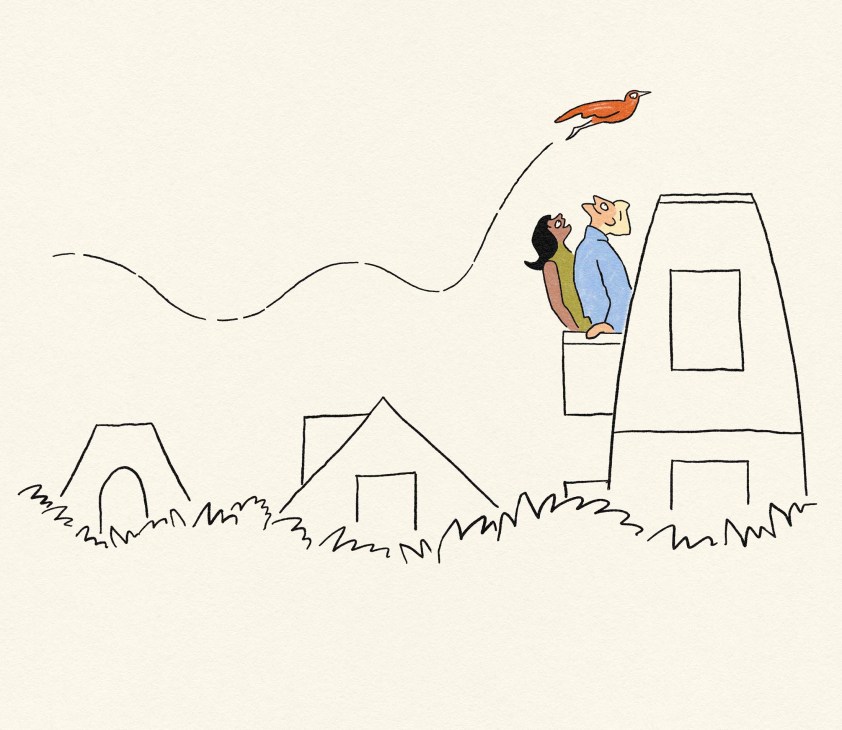
4.
Legalise backyard homes
Support gentle density and the era of the mid-rise
Many urban areas suffer from a binary choice: leafy low-rise suburbs or high-density tower blocks. Cities should also be investing in the middle-ground option: mid-rise, context-sensitive developments. From backyard homes and duplexes to in-fill developments, these options can help to create community-minded mixed-used neighbourhoods. Strict regulations and zoning laws have limited housing supply so it’s time to allow for low-to-mid-rise housing that can slip in alongside terraces and detached homes. It works, as the city of Auckland can attest. Now a decade into its Unitary Plan, it has rezoned more than half of the city’s residential land to let homeowners build up to three extra dwellings per lot. Same pretty street, more nice neighbours.

5.
Use it or lose it
Name and shame the owners of long-term vacant units
If homes are primarily seen as an investment, it will be impossible to fix the housing shortage. For too long, many have viewed property as a means by which they can hold an appreciating asset, often in a currency other than their own. And these so-called assets are frequently left empty. Some cities are beginning to fight back, cleverly using data to identify the scale of the problem. In 2023, Melbourne’s government examined water consumption and calculated that 100,000 homes in the city were unoccupied or underused, while Paris monitored census data and electricity usage, and found 262,000 empty dwellings. Both cities have seen calls to increase taxes on the owners of such uninhabited properties.
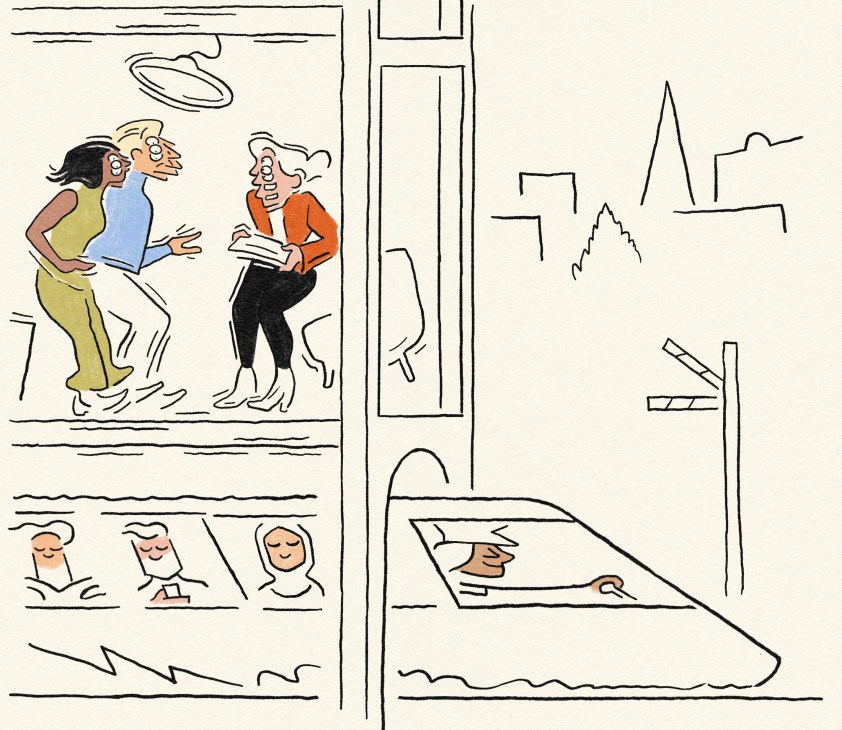
6.
Make transit the first stop
Compel developers to invest in better public-transport links
A move to the suburbs is not a social death sentence if you can easily zip into town on public transport. The building of big developments should come with an obligation on the part of the developers to improve local transport connections. Hong Kong’s MTR Corporation’s Rail 1 Property model is a good template. It builds high-rise residential and commercial buildings above metro stations, funding the transit system while creating vibrant, car-free communities. Another example is London’s Battersea Power Station redevelopment, which required a contribution of £270m (€320m) on behalf of the developers towards the construction of two new Underground stations.
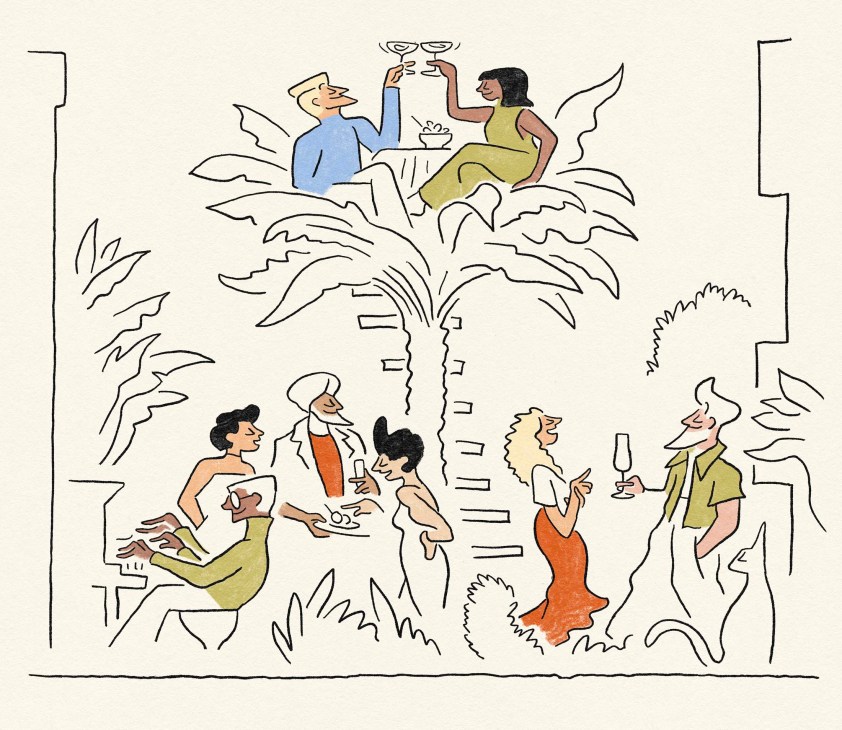
7.
Encourage community power
Bend a few small rules in order to make a lot of big changes
Macro interventions in the housing market by the relevant authorities – at both the local and national level – are important but these take time and tend towards the bureaucratic. Nobody knows what’s better for a place than the people who live there. While order and basic structures are necessary, citizens should know when to break (or, let’s say, “bend”) rules too. Excessive regulation can slow change to a crawl. So, if you see an abandoned green space that’s overgrown with weeds or drowning in litter, why not lobby to turn it into a garden or vegetable patch? The hubbub of outdoor socialising brings life to the streets and can make an area safer, as long as it’s done responsibly. The same can apply to allowing children to play outside.Yes, even if it is a dreaded ball game.
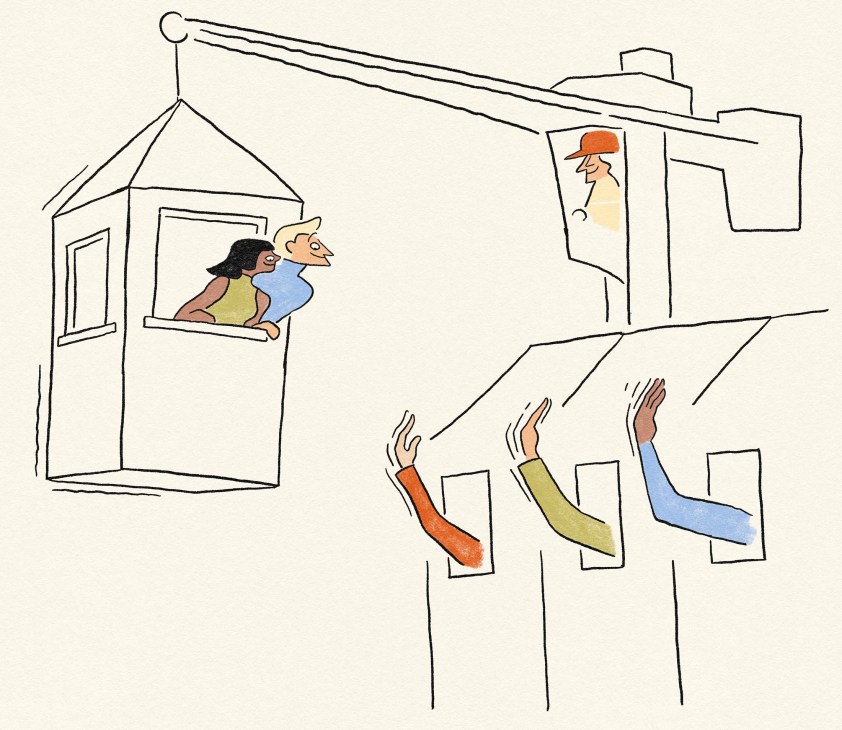
8.
Turn nimbys into yimbys
Help locals to buy into planning decisions by putting more power in their hands
Inside every Nimby (“not in my back yard”) is a Yimby straining to get out. There is growing evidence that many objectors simply resent not being involved in the planning process and feel that building decisions are being made without
due consideration towards the potential concerns of the area’s residents. One possible solution for transforming Nimbys intoYimbys is to give members of the neighbourhoods involved the ability to sign off on – or even propose – new buildings or building extensions. If people believe that new homes could be available to previously priced-out relatives or friends, then objections might melt away.
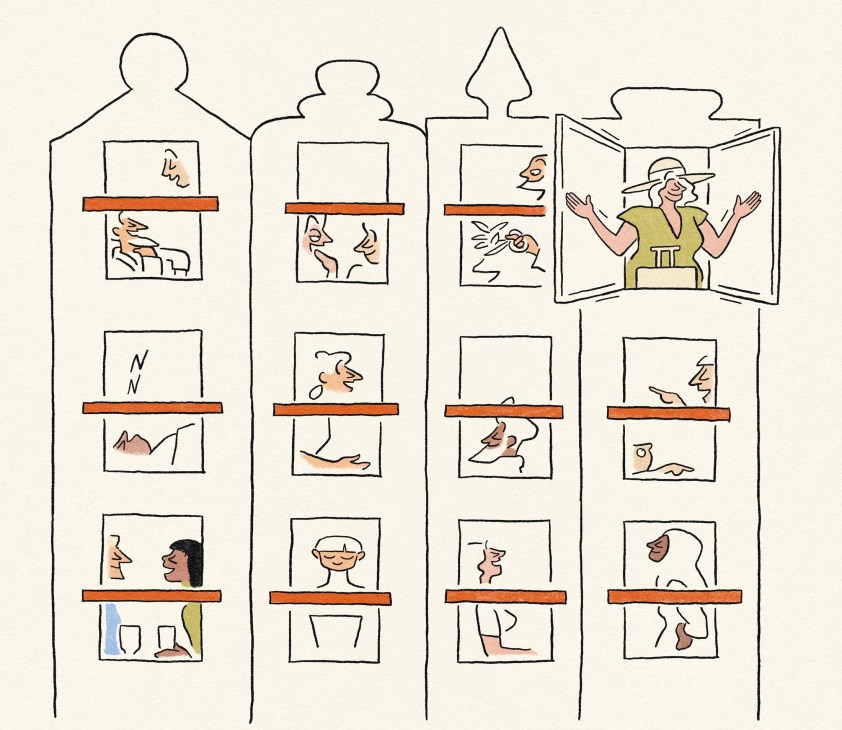
9.
Properly regulate short-term lets
Don’t let Airbnb-style rentals rip the heart out of cities
The laissez-faire attitude to short-term rentals has hollowed out many inner-city neighbourhoods across Europe and provoked an electoral backlash. Spain has ordered the platform to remove 66,000 property listings for unlicensed apartments, while Barcelona plans to ban all short-term rentals by 2028. Airbnb counters that it isn’t to blame for housing shortages but it’s clear that the market needs more regulation. Amsterdam’s mayor, Femke Halsema, has proposed a novel solution. In the Dutch capital’s most rapidly gentrifying areas, the government will vote on whether to reduce the maximum number of nights for which properties can be rented out from 30 to 15.
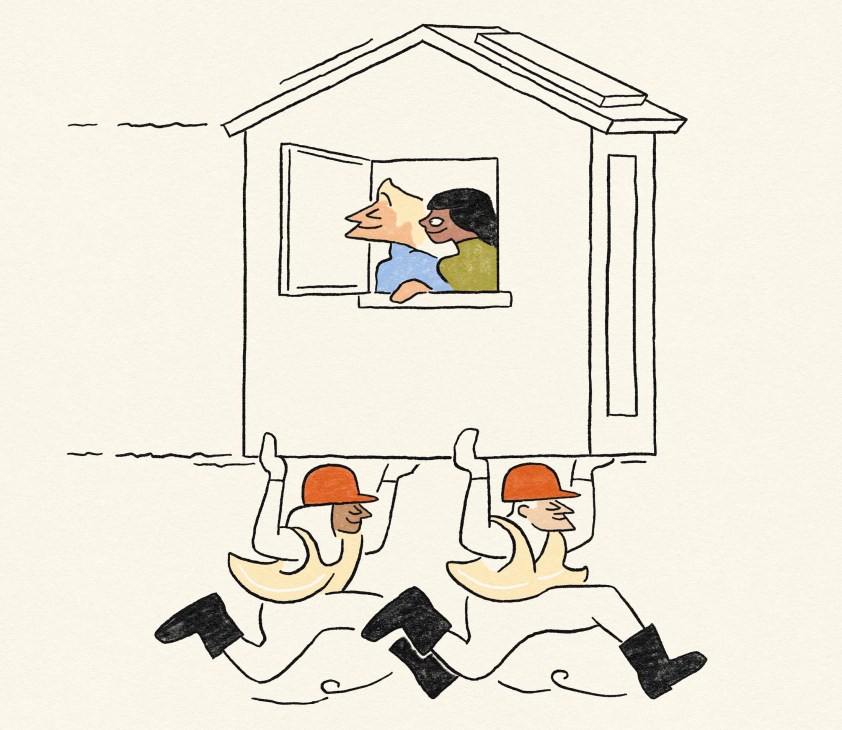
10.
Train more builders
You can’t create more housing without enough construction workers
Countries suffering a housing crisis often announce ambitious building targets only to discover that they lack the required construction workers to achieve them. Importing foreign builders is often politically fraught so there has been a renewed focus on training young people, while making construction a more appealing and sustainable profession.
The UK’s Labour government recently unveiled a plan to build 1.5 million new homes by 2029. Faced with more than 35,000 unfilled vacancies in the building sector, it also announced a scheme to train as many as 60,000 construction workers. This £600m (€710m) investment will also include the establishment of new technical colleges, thousands of apprenticeships and more than 40,000 industry placements.
Illustrations: Jonny Glover



